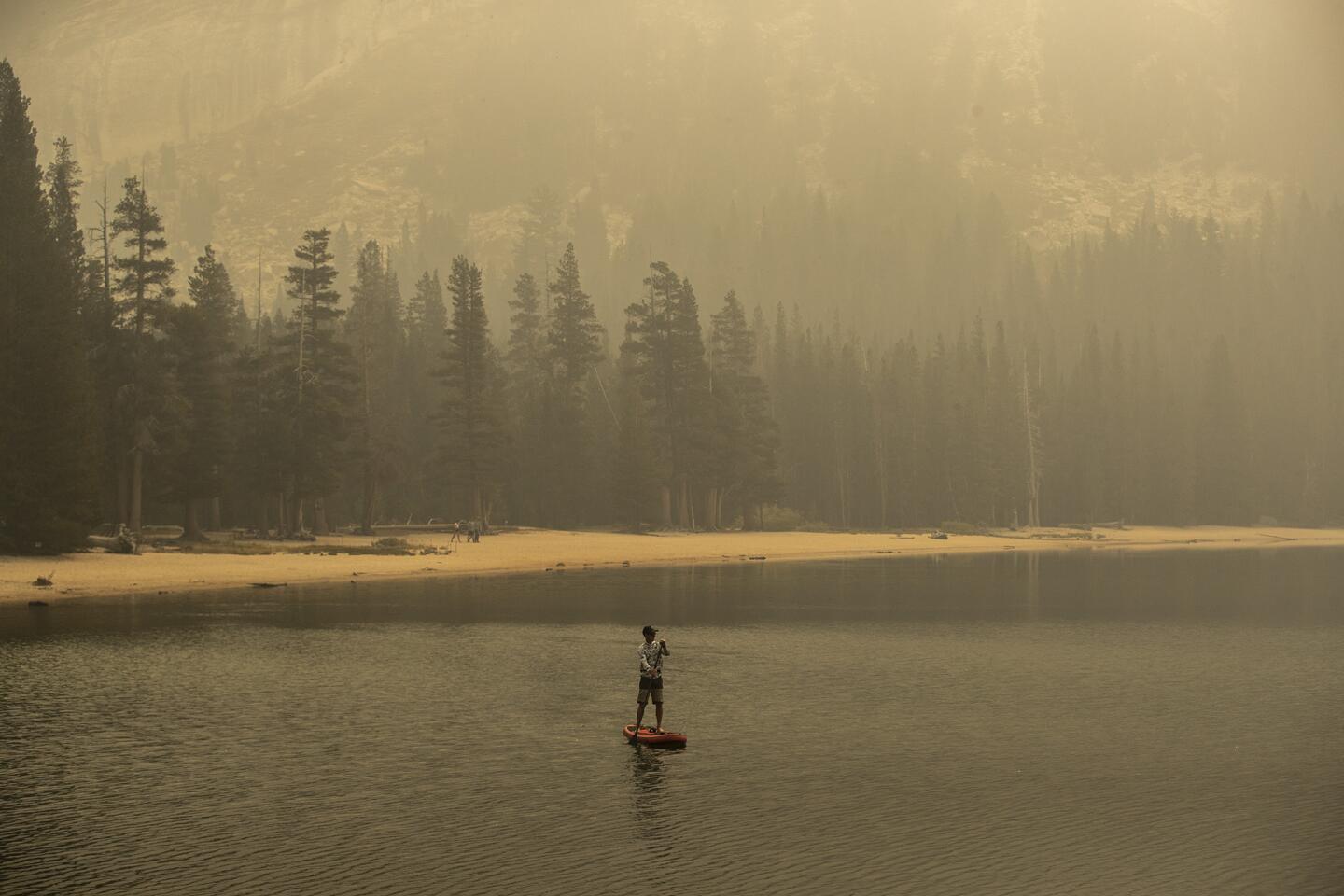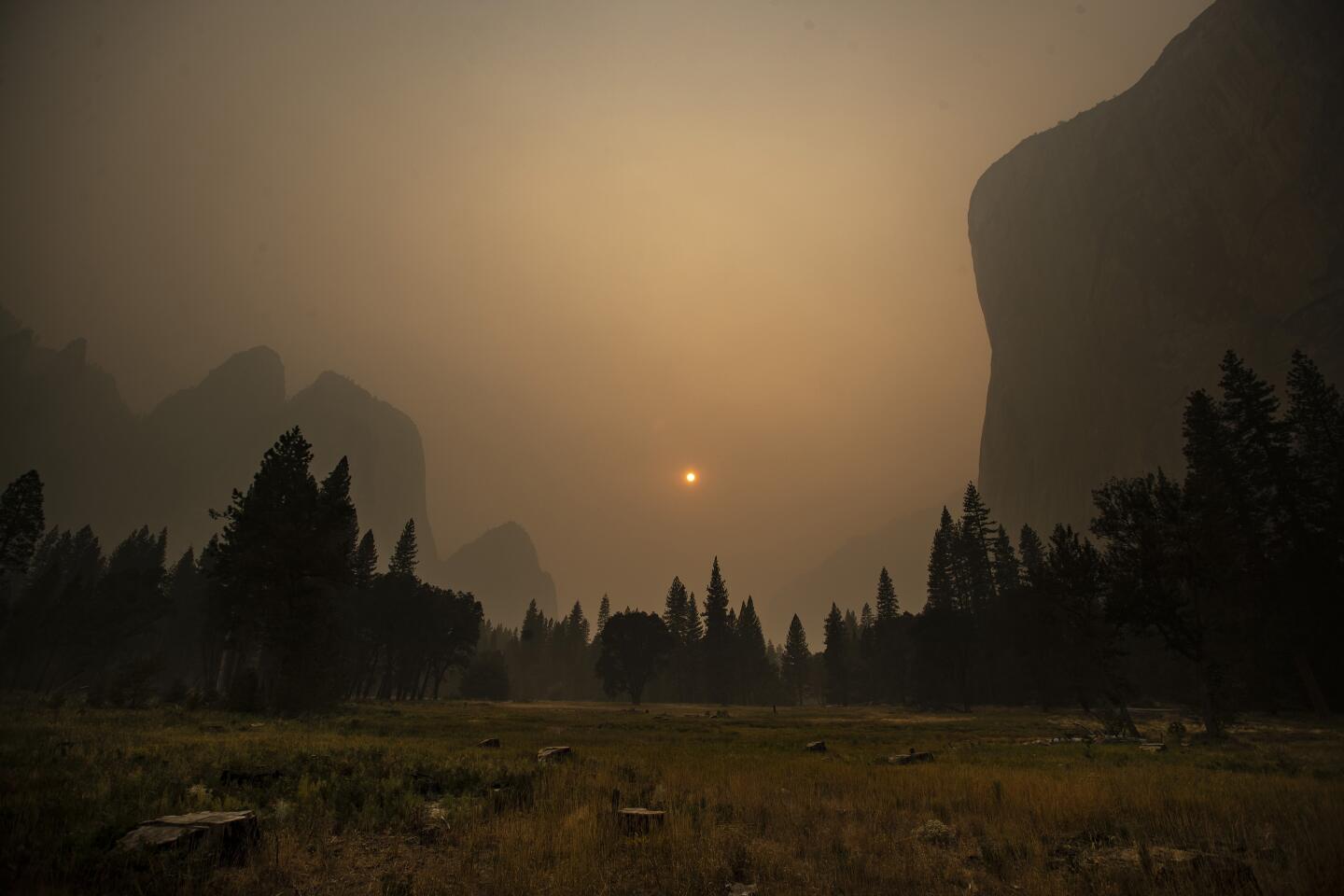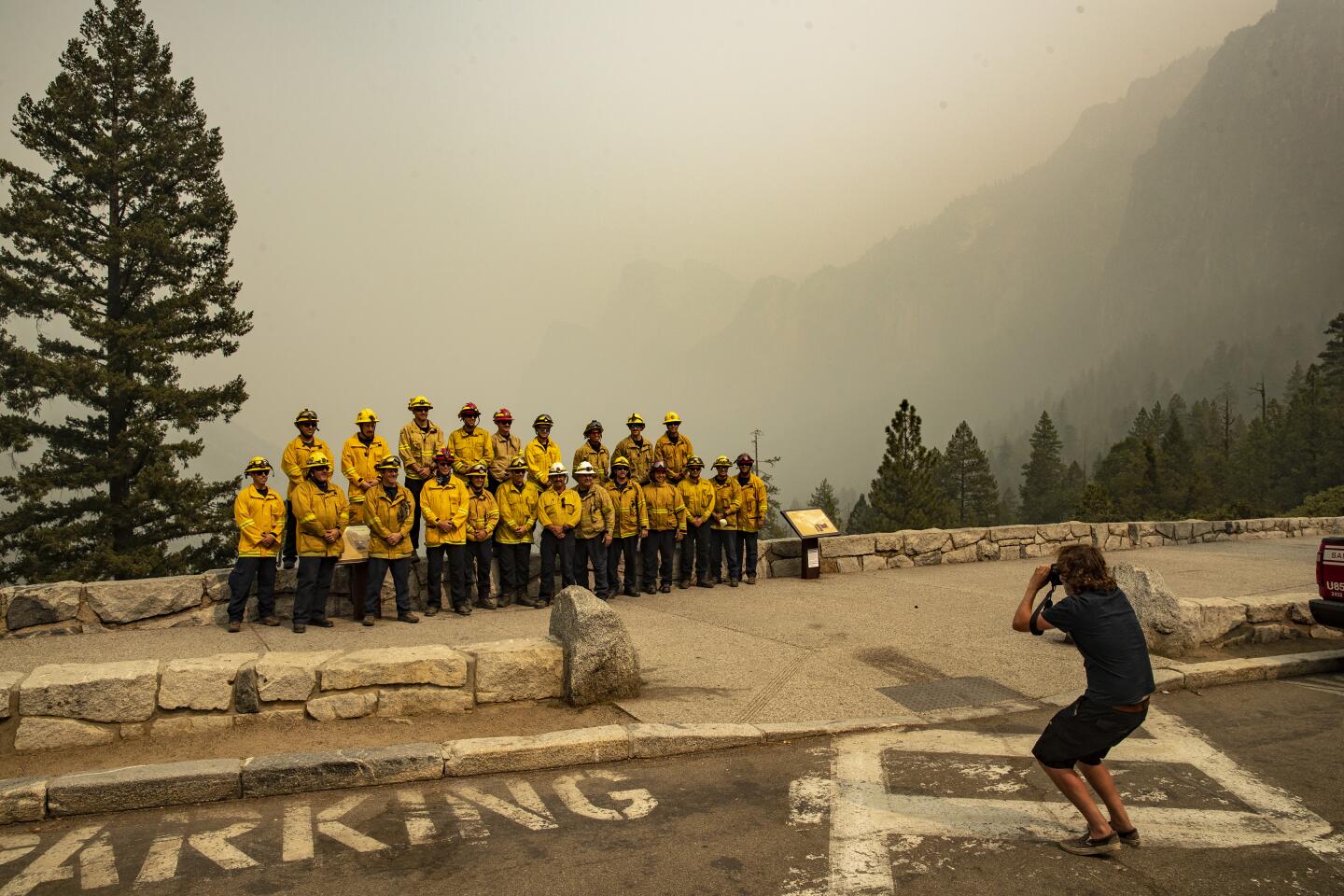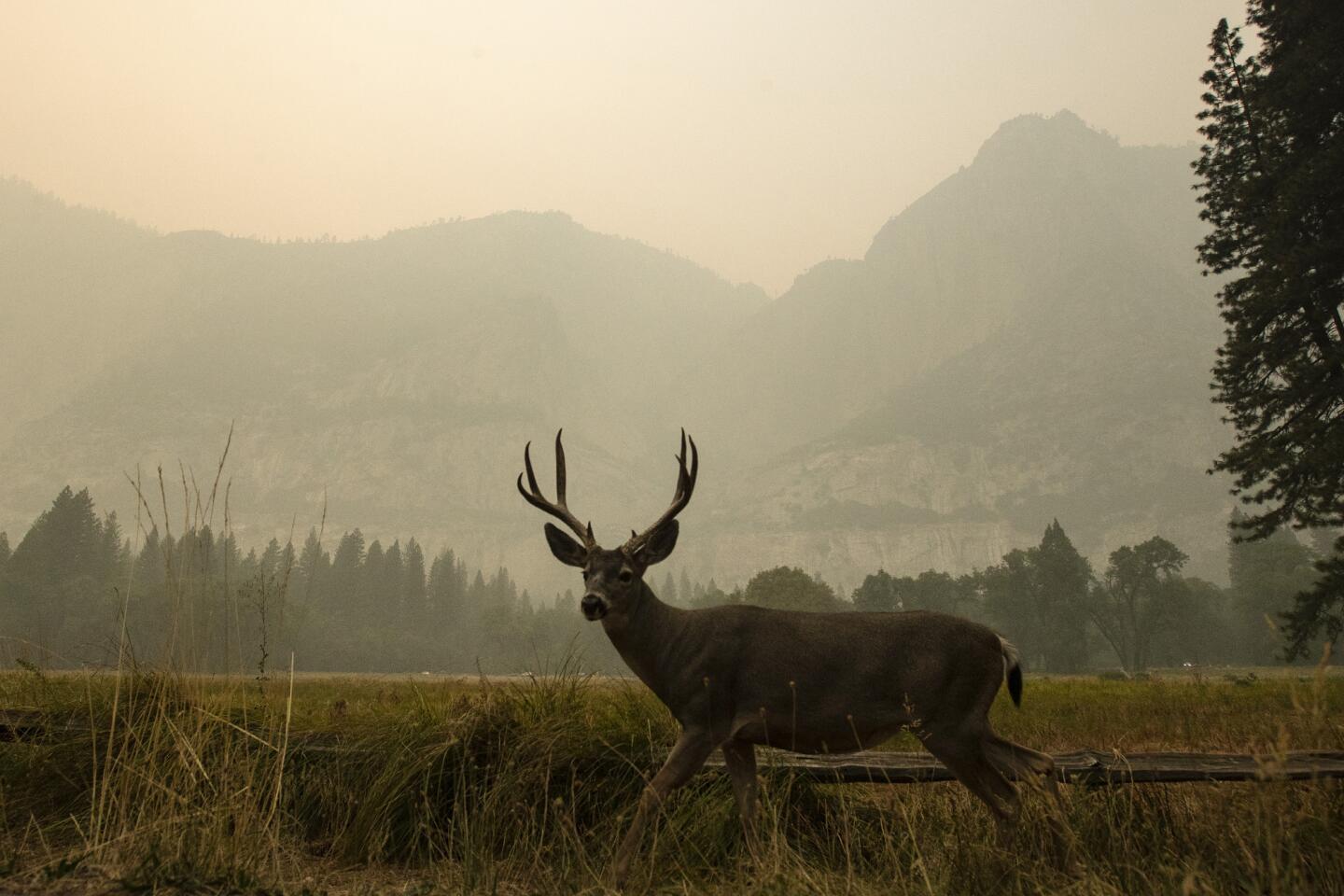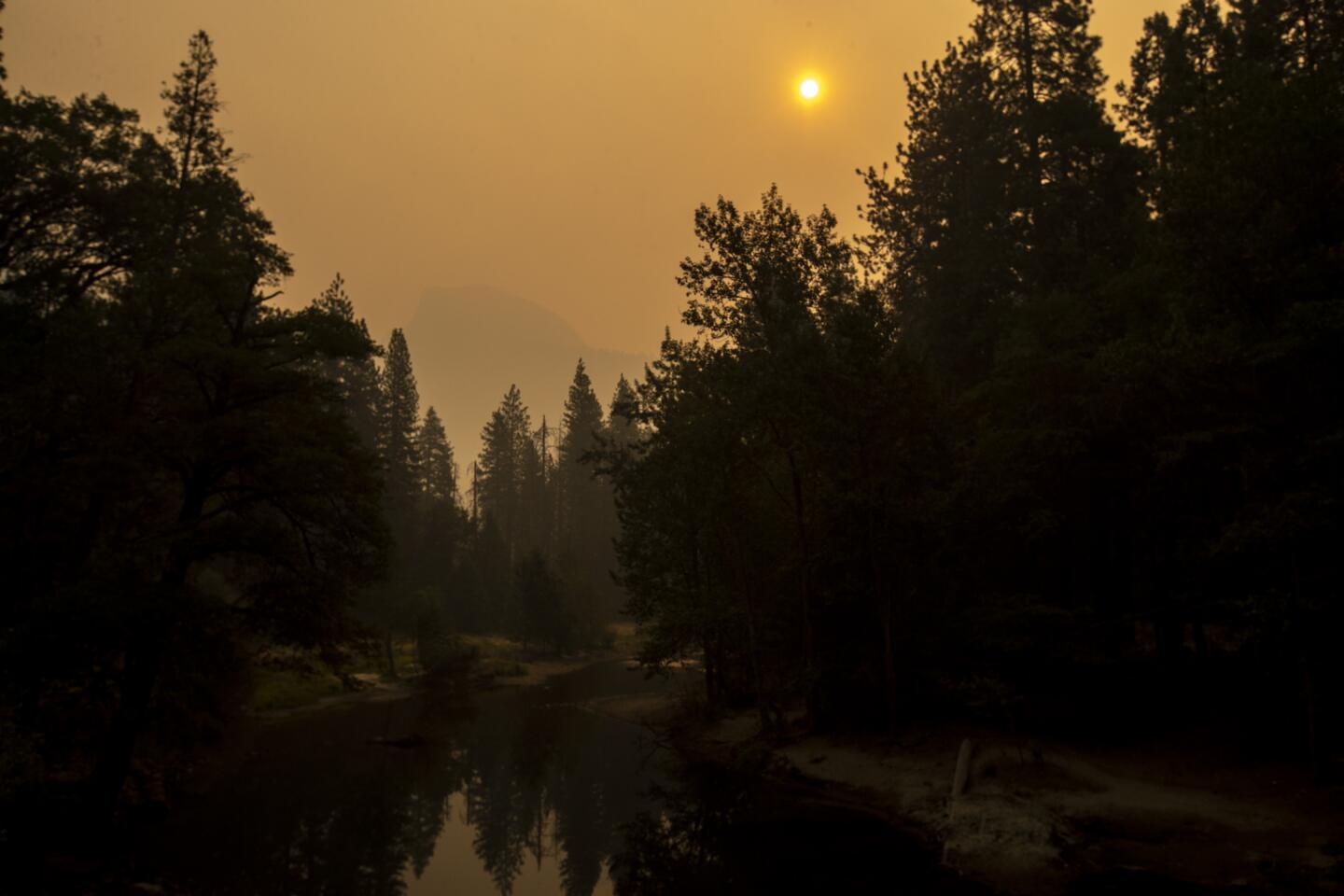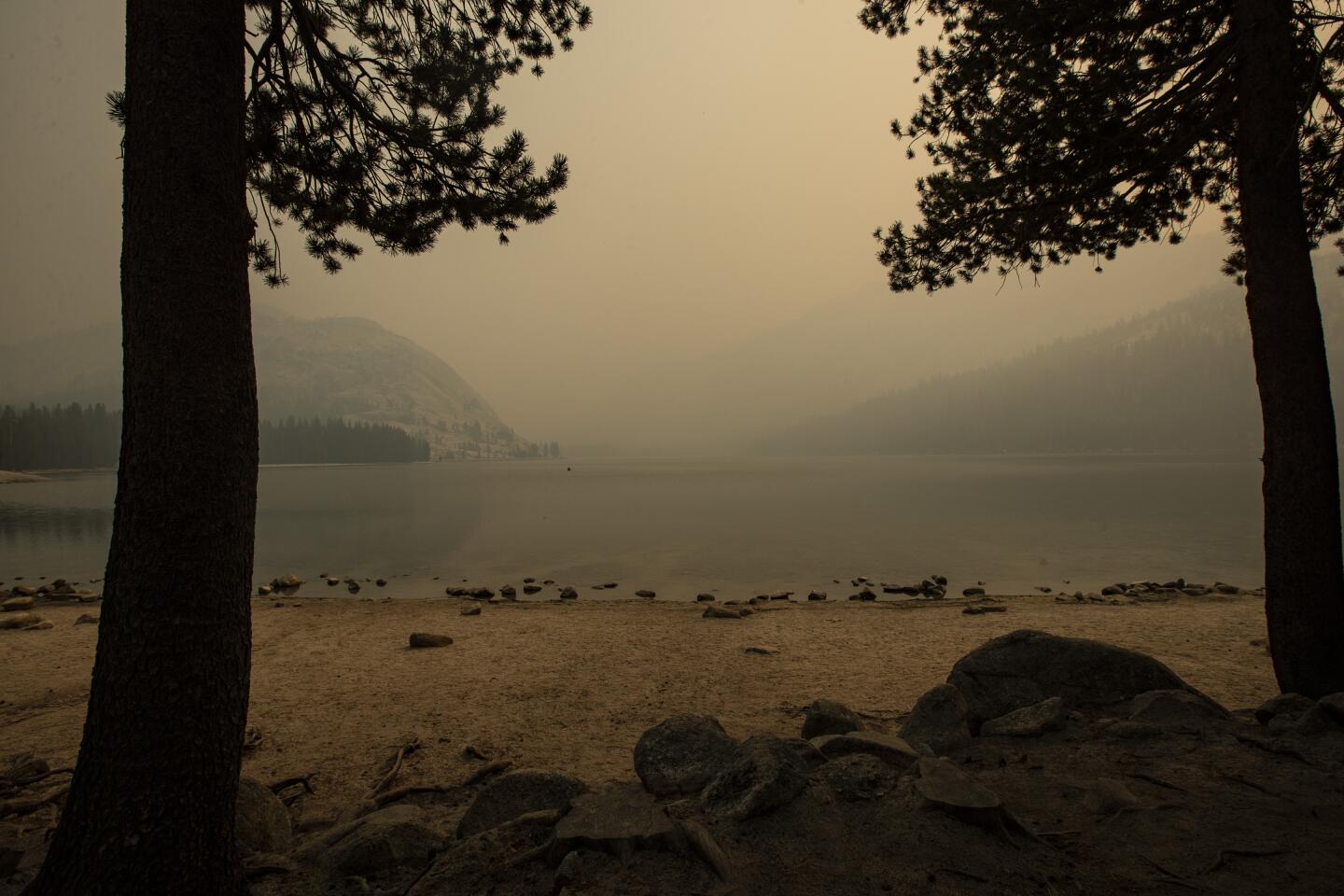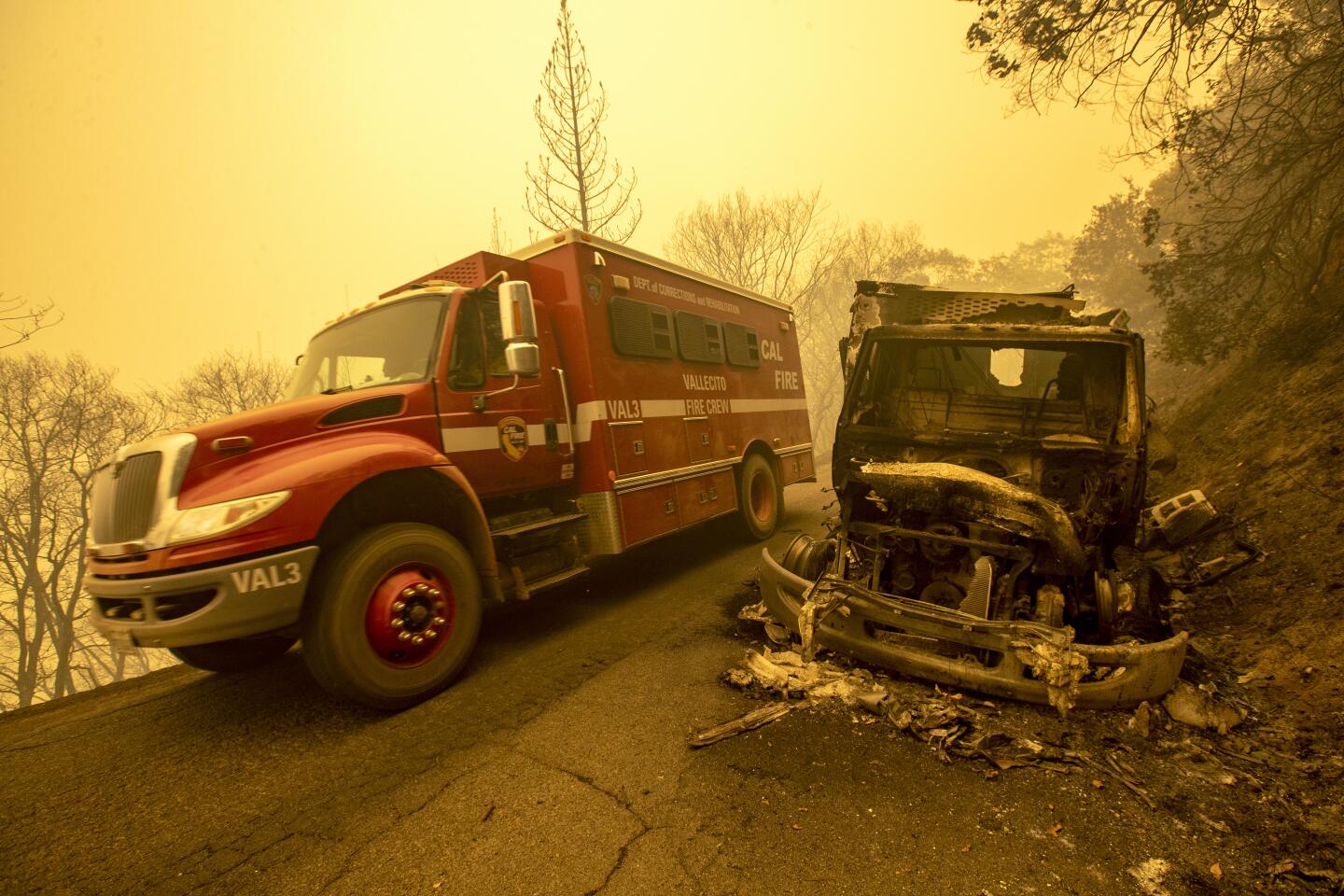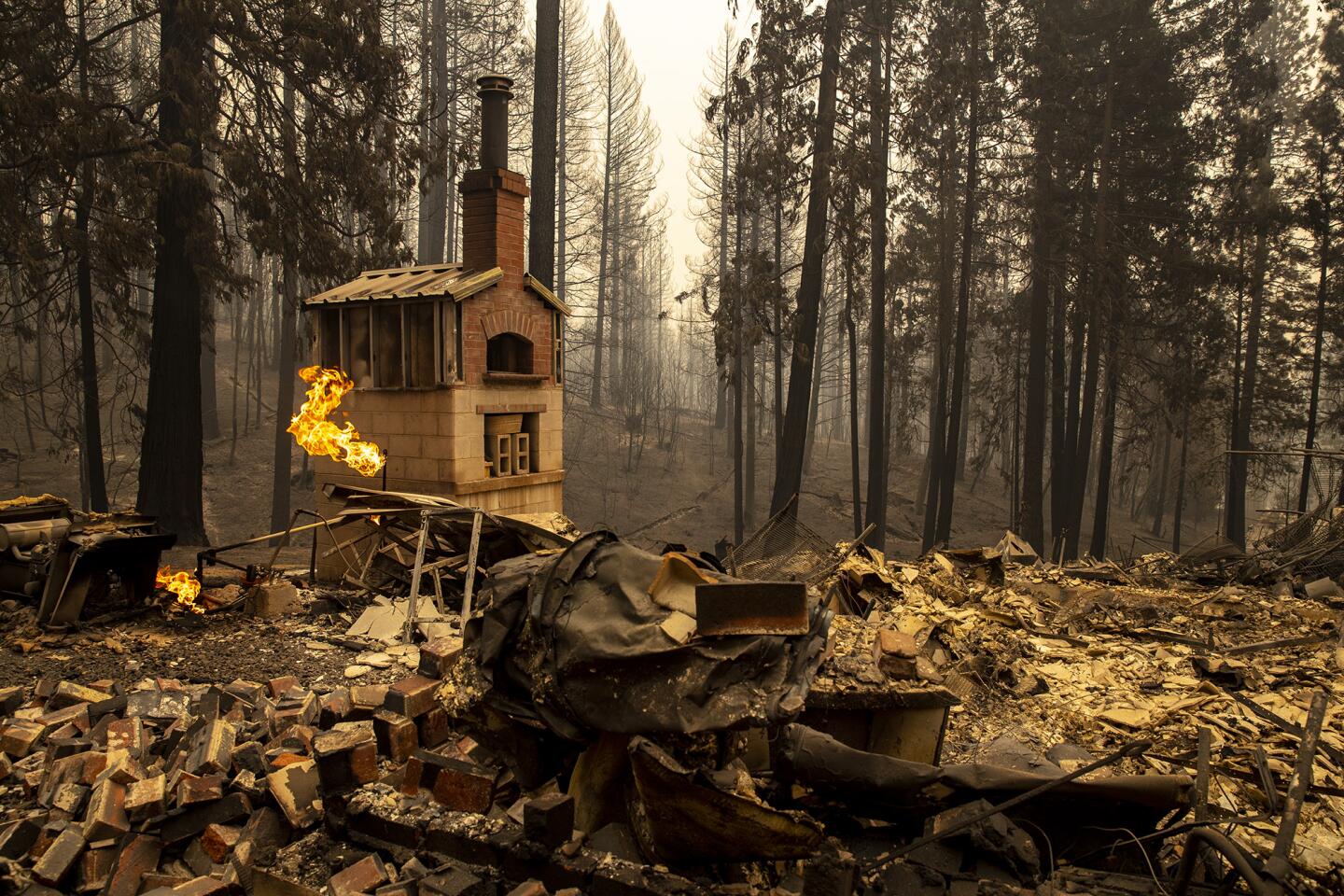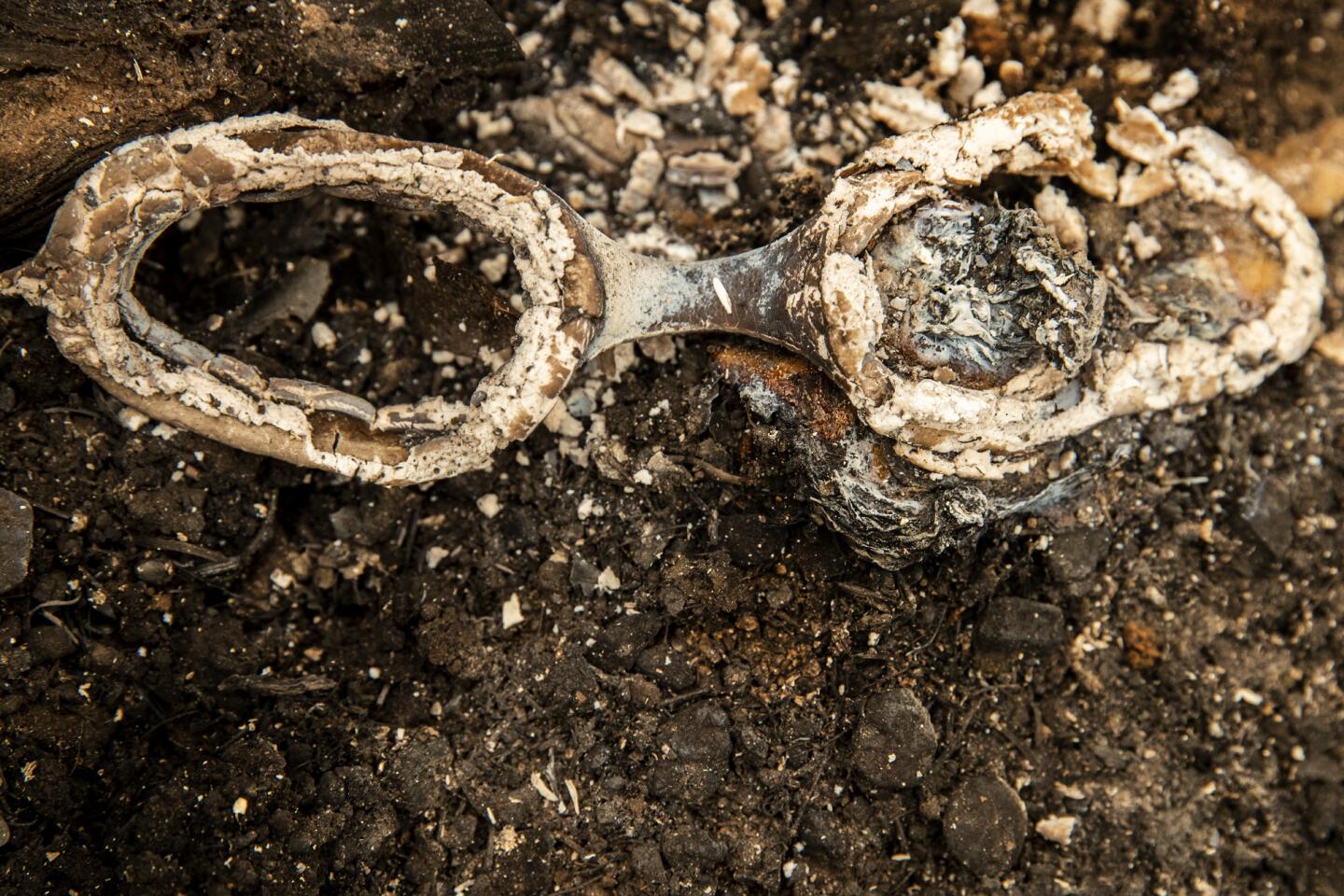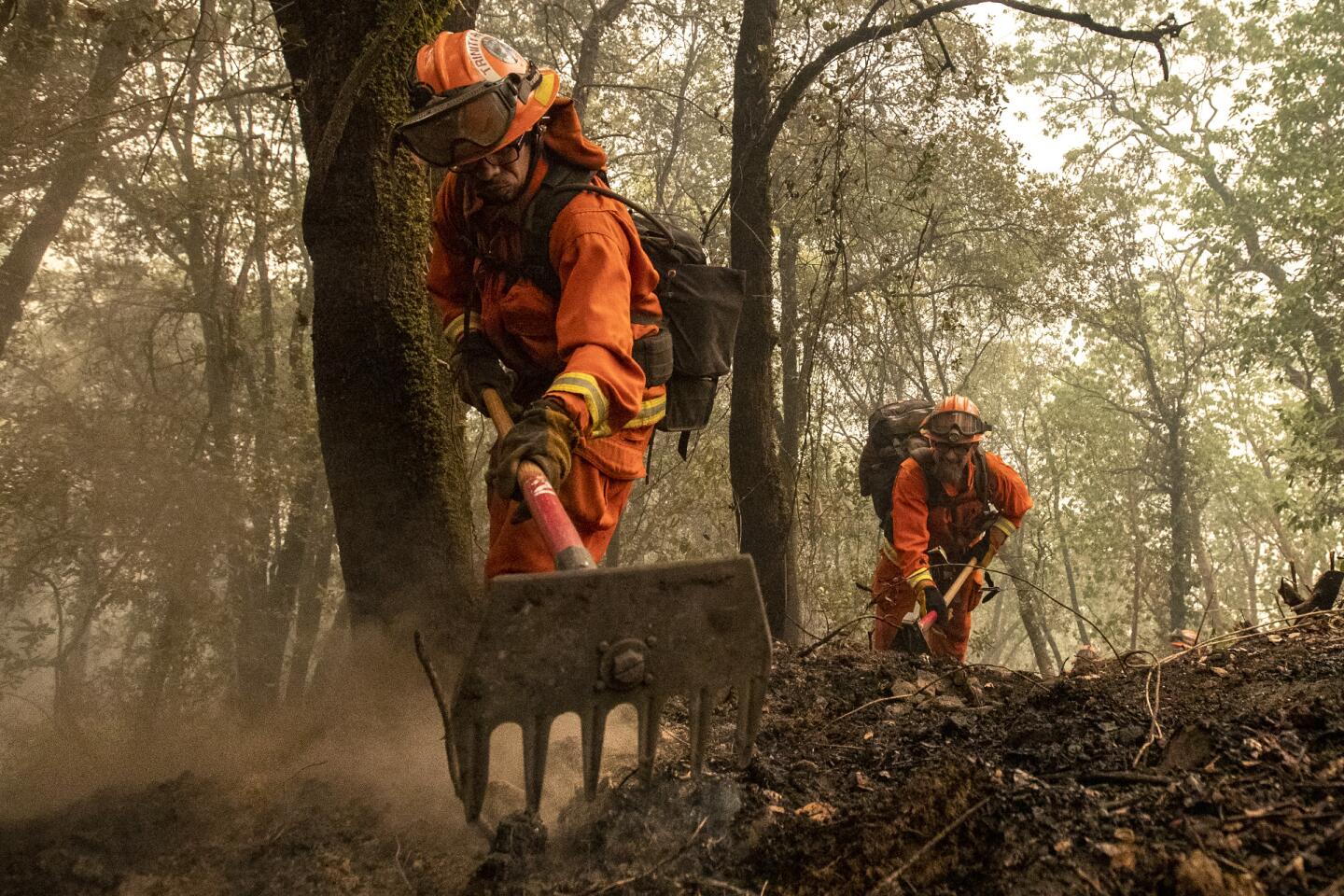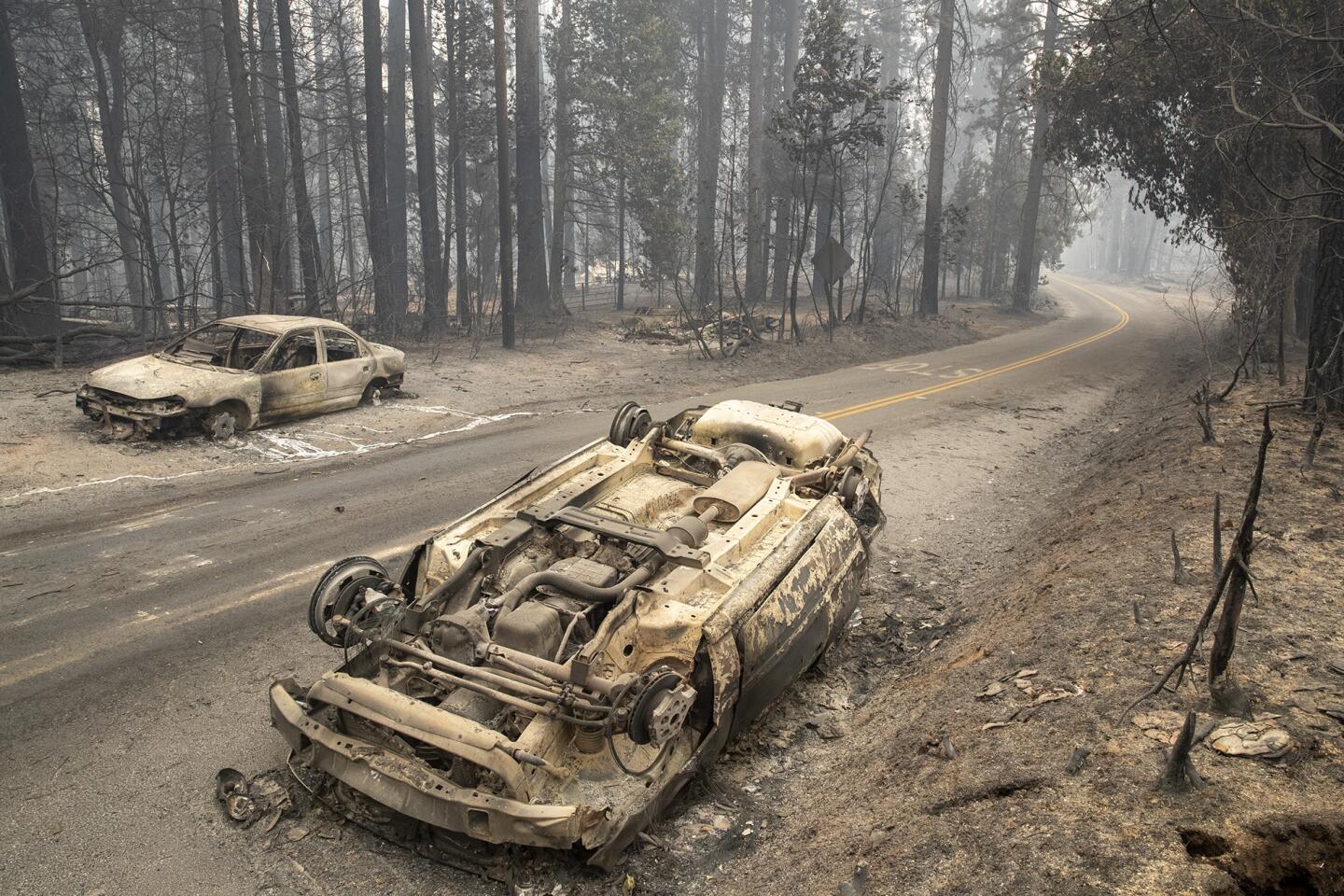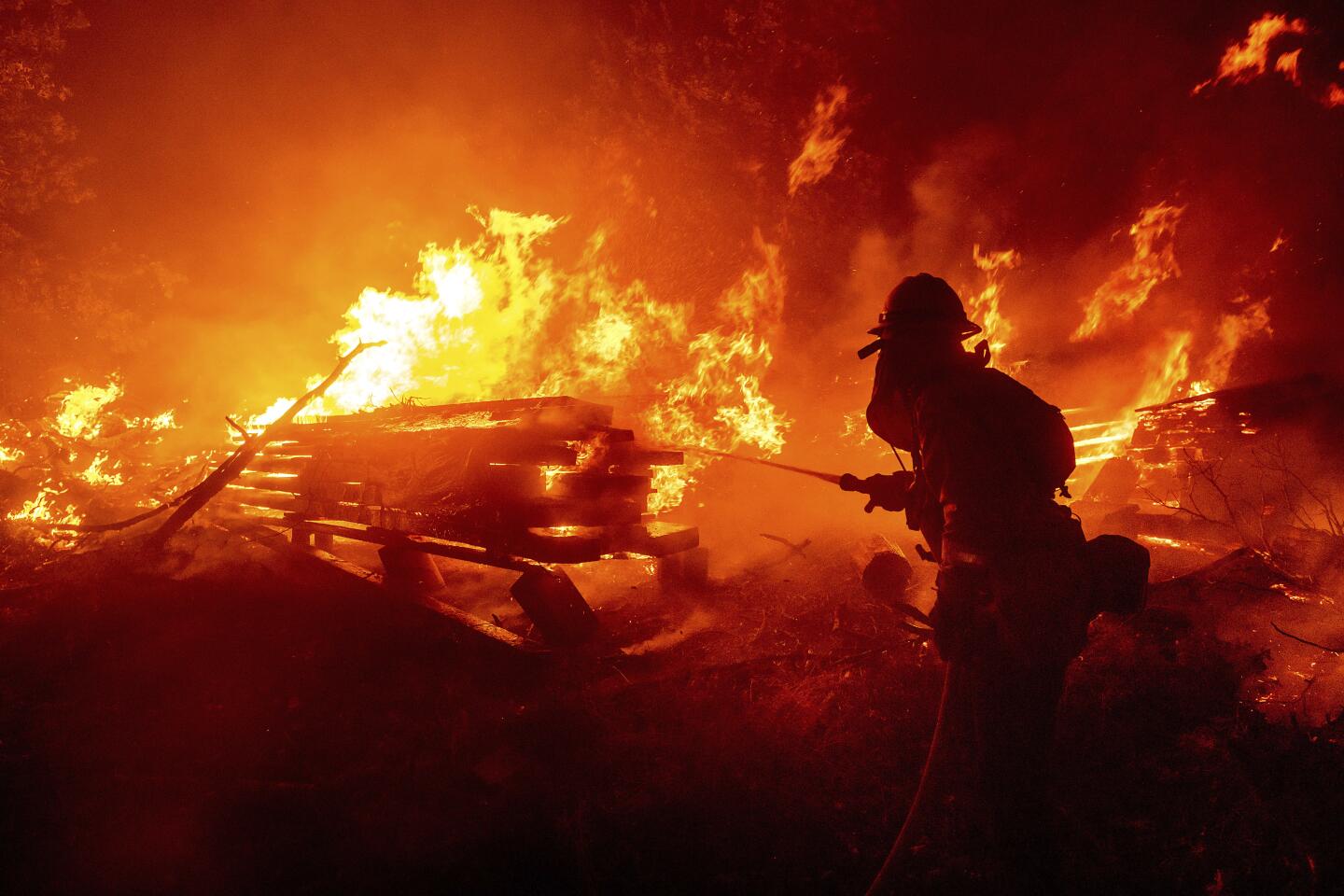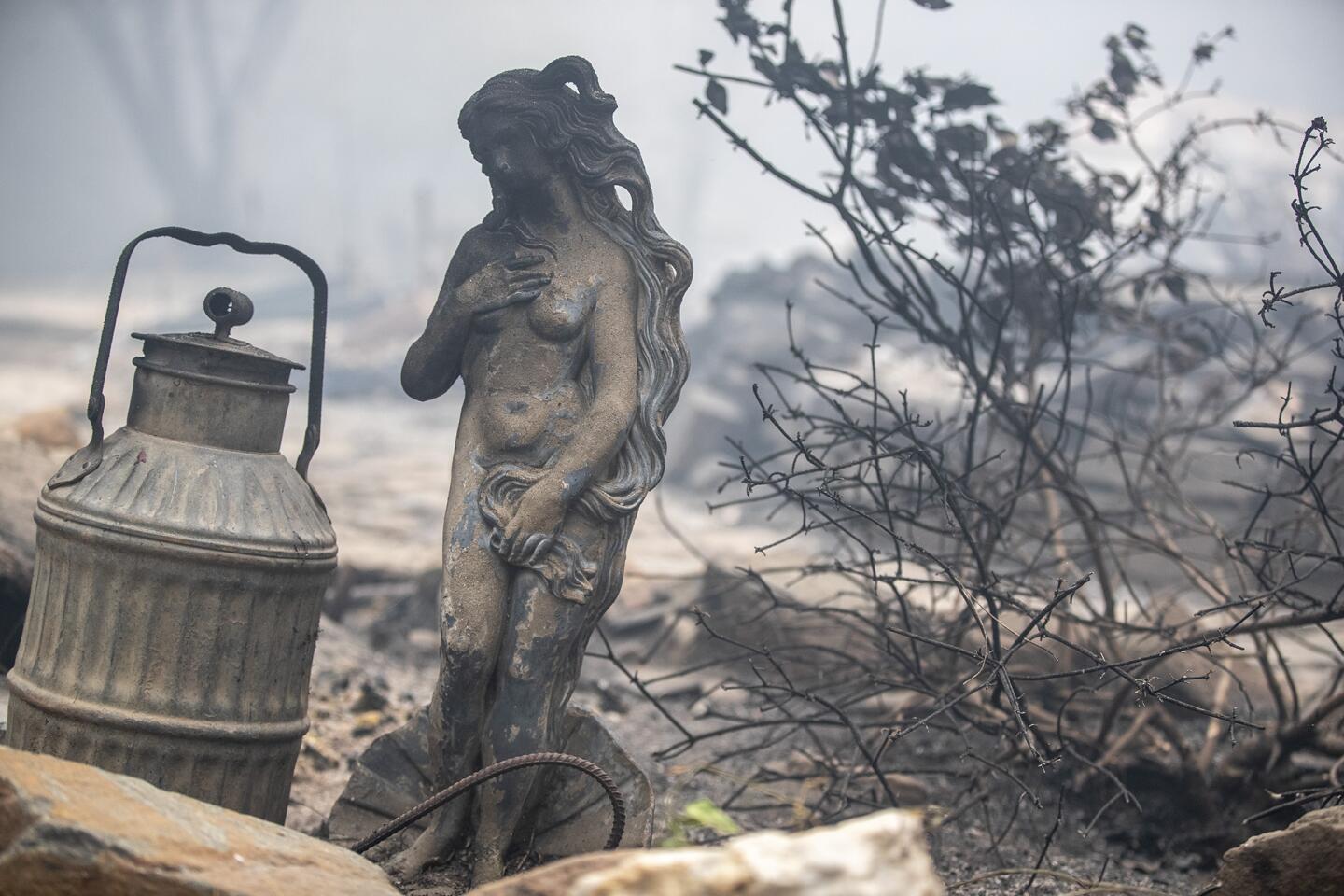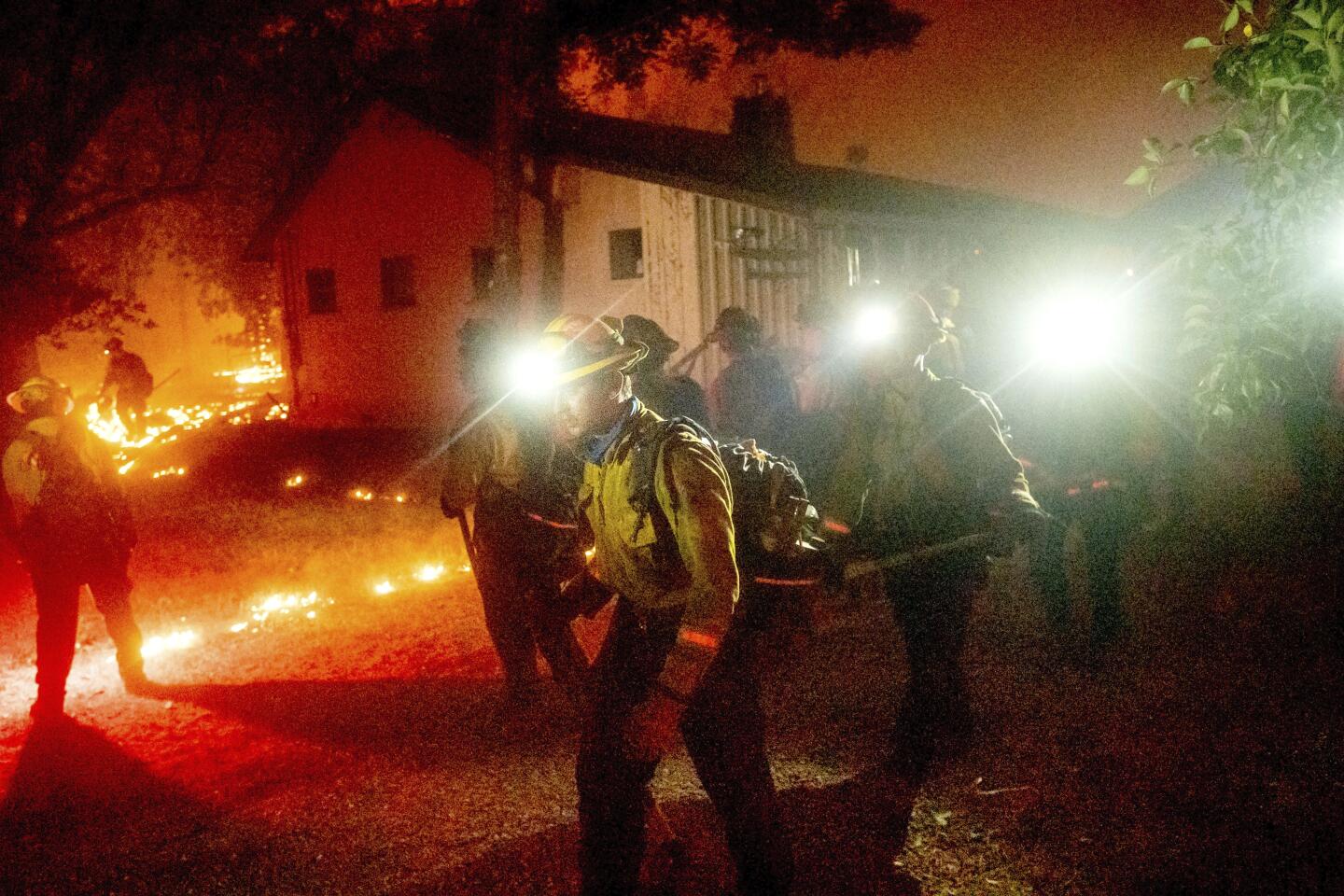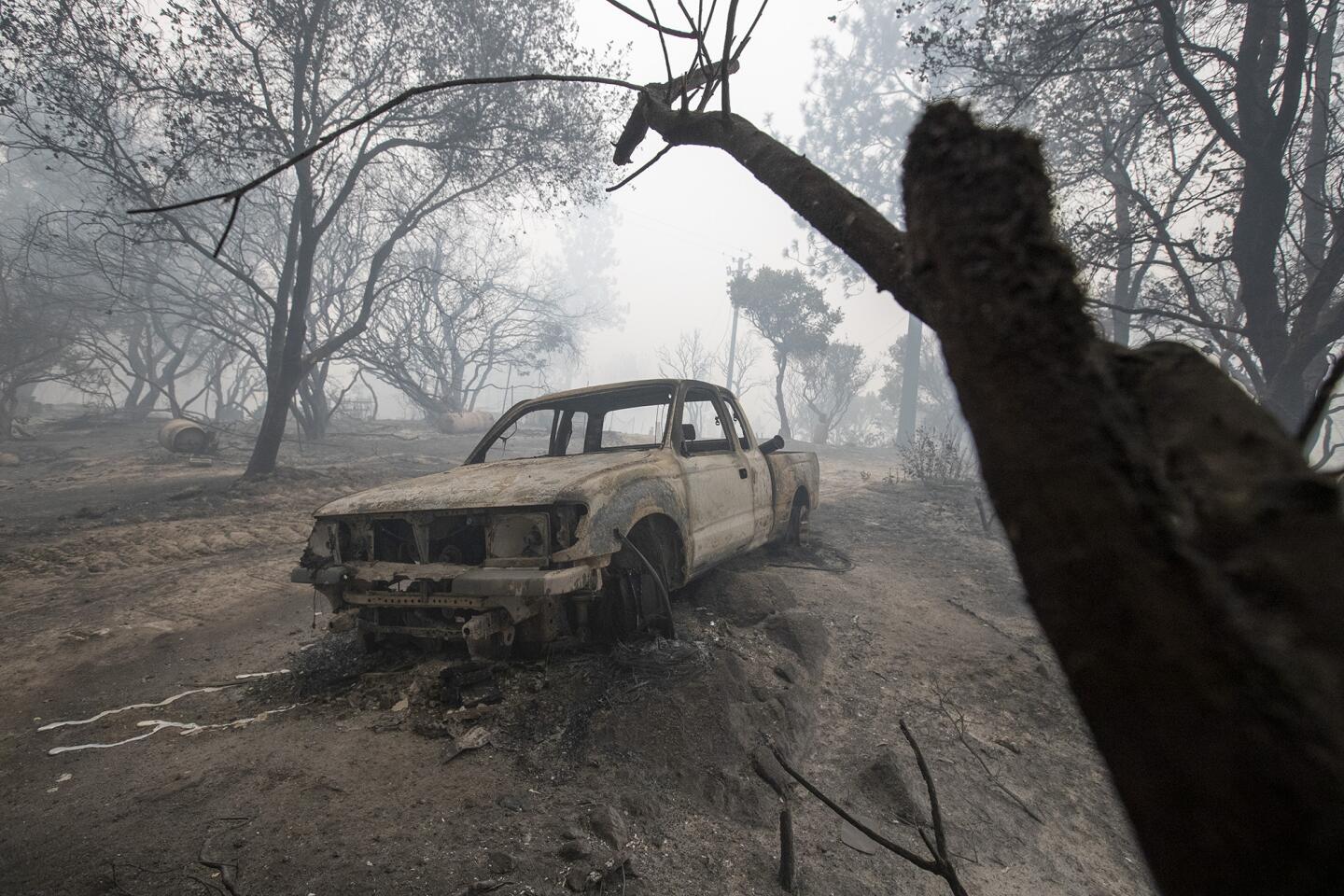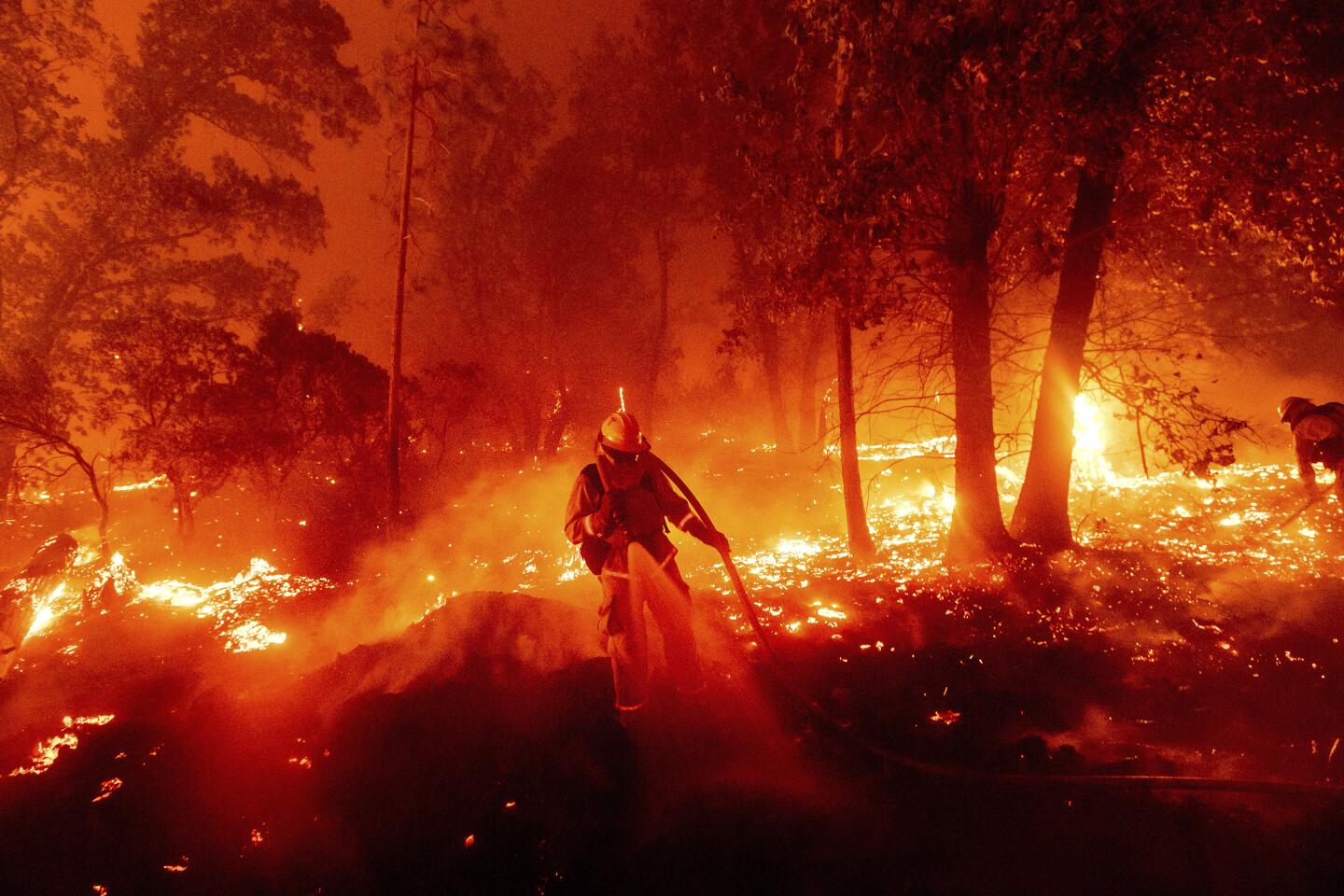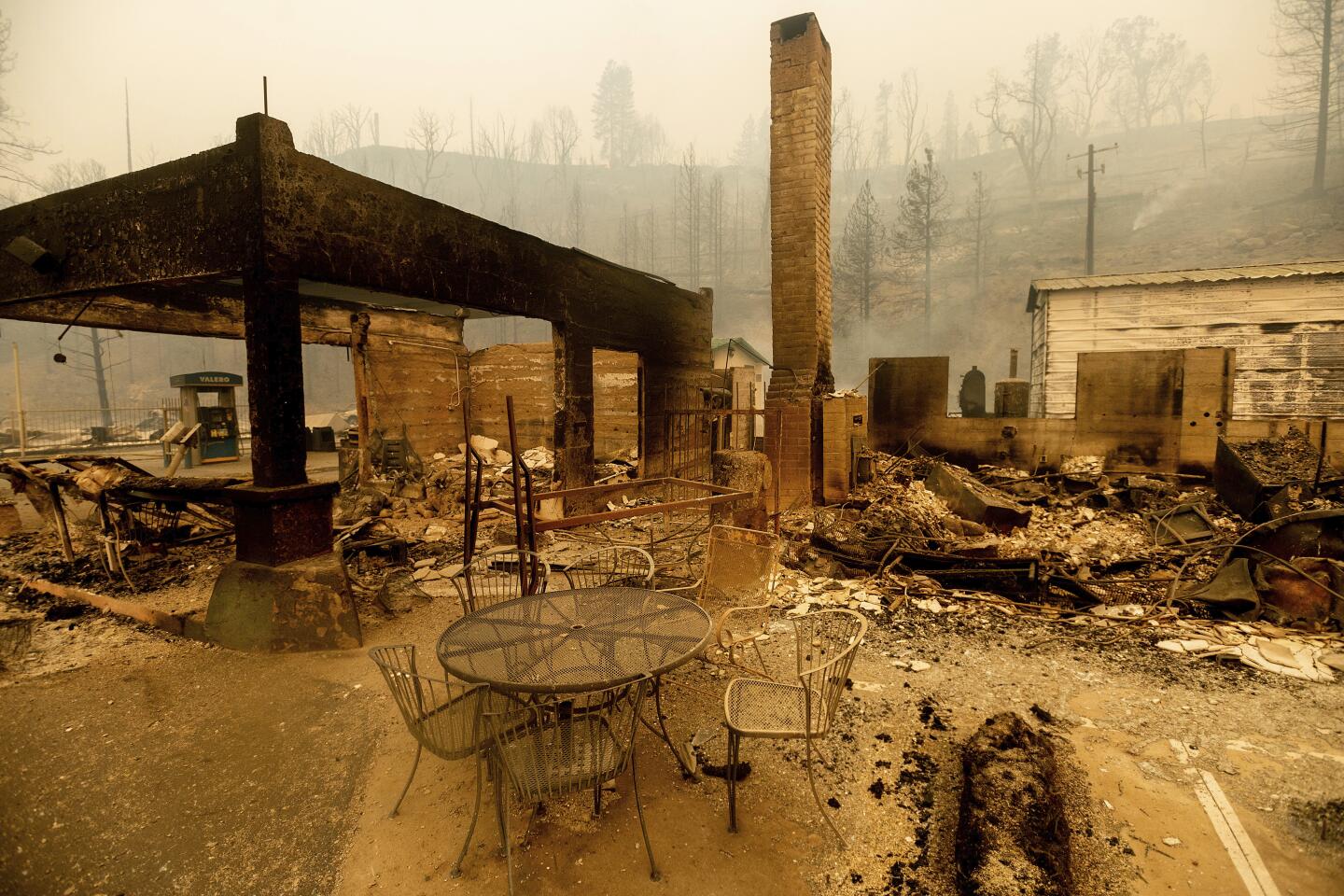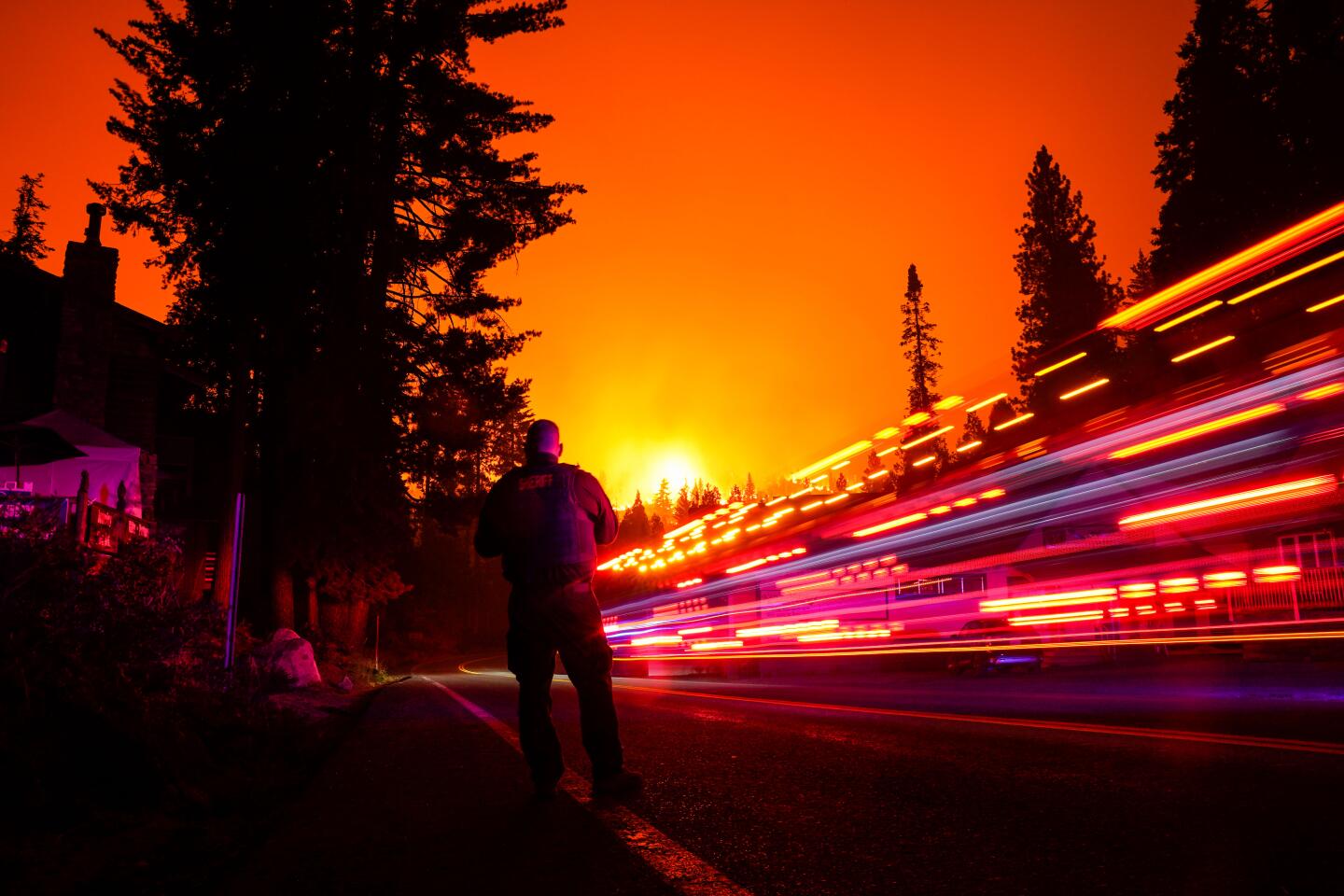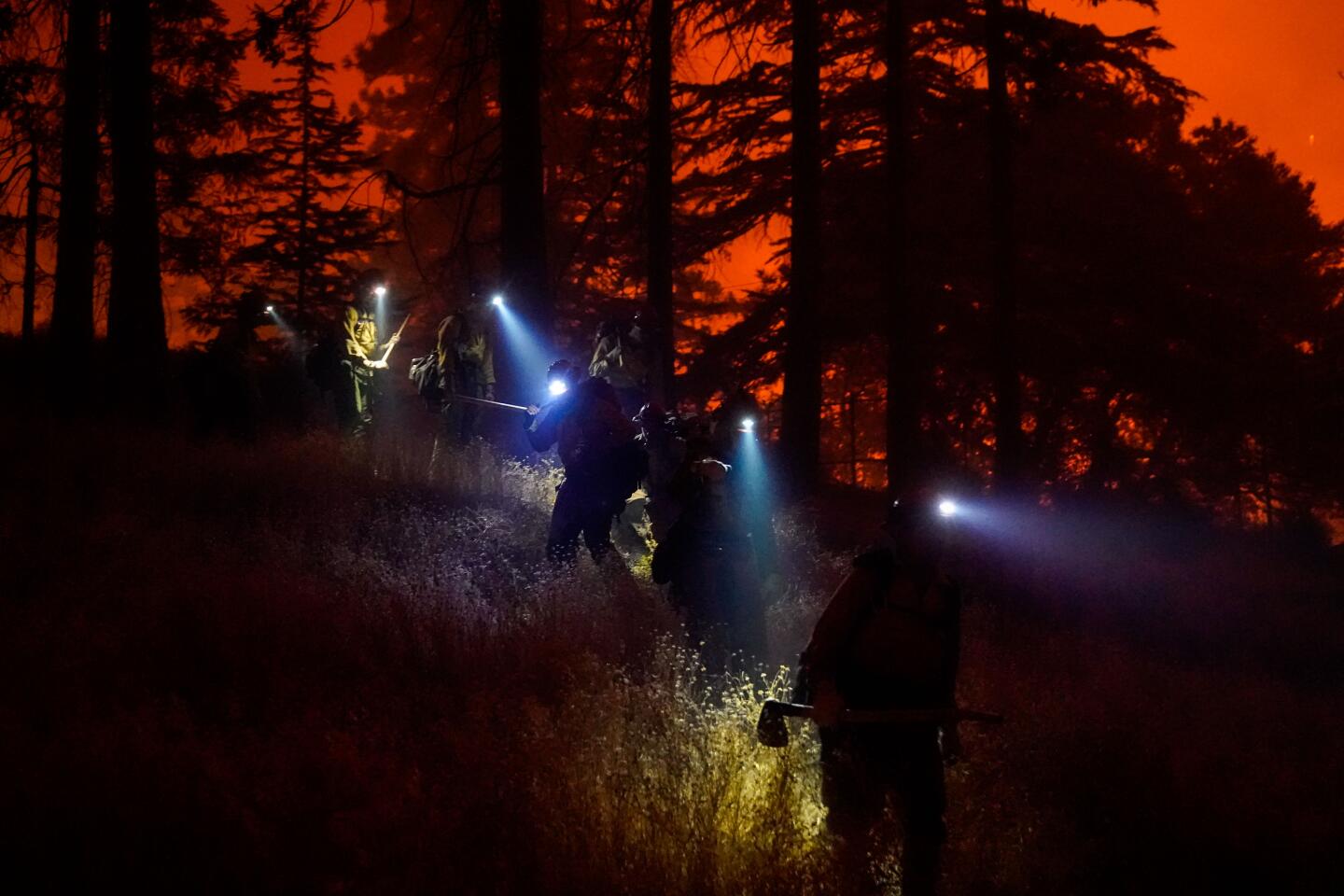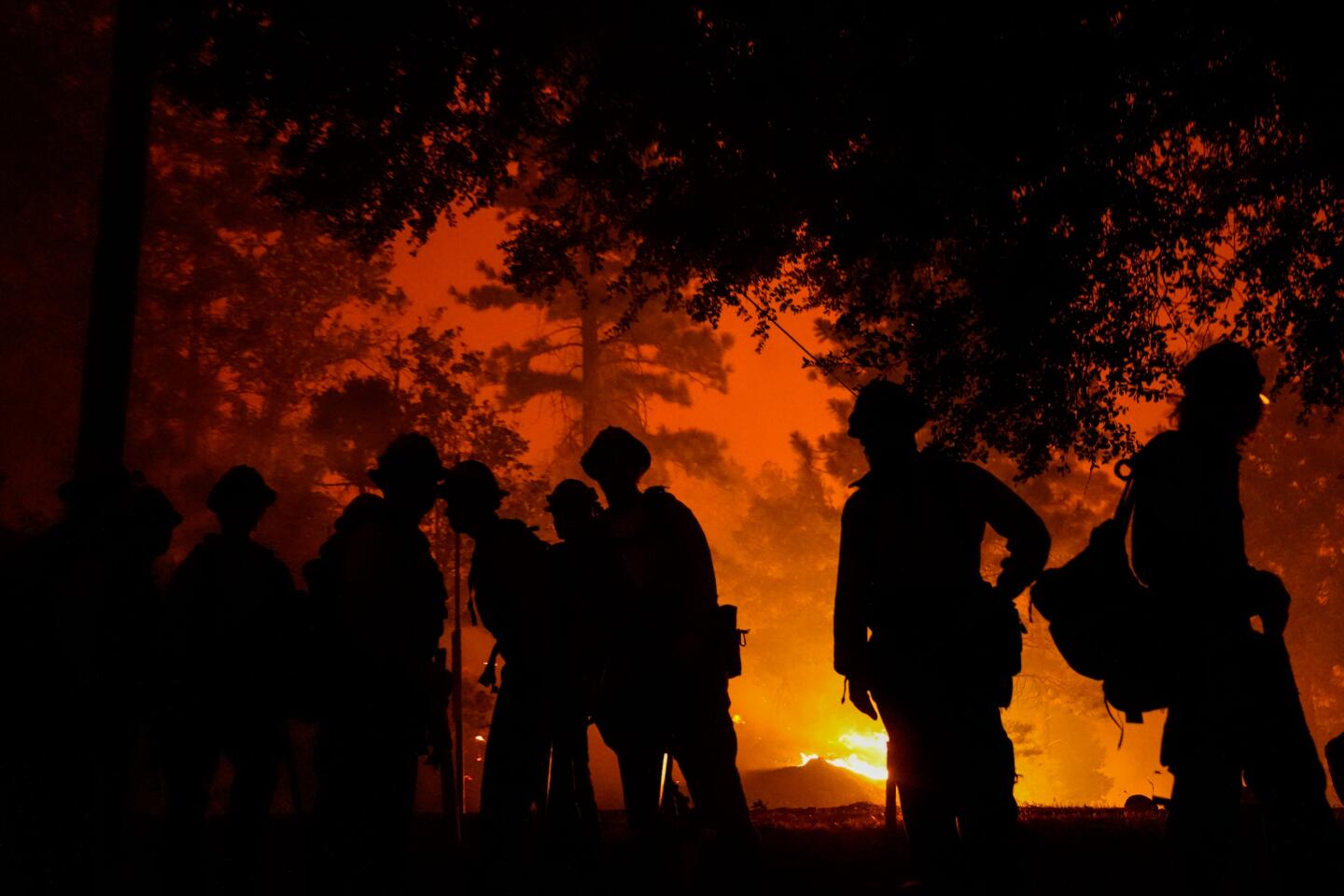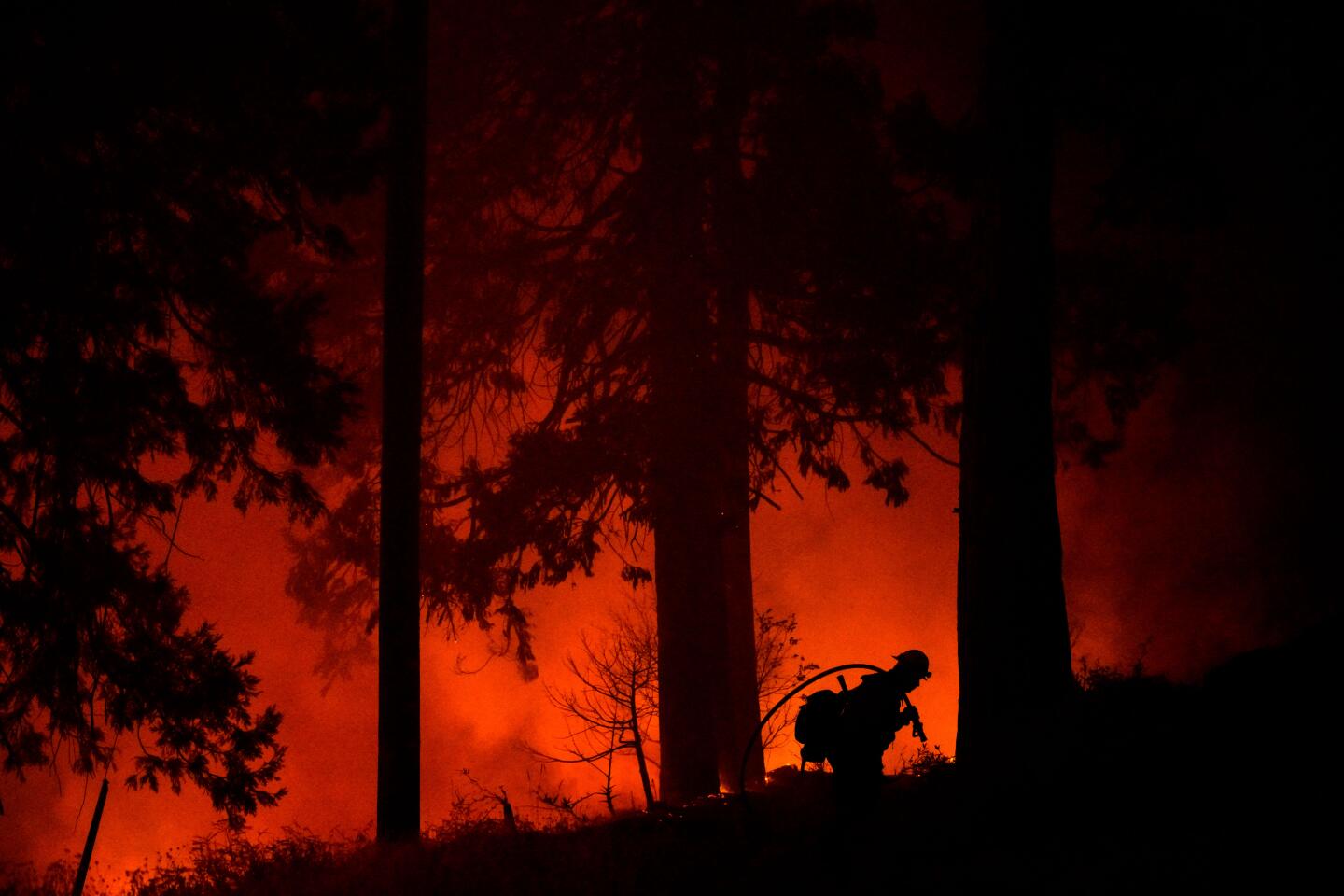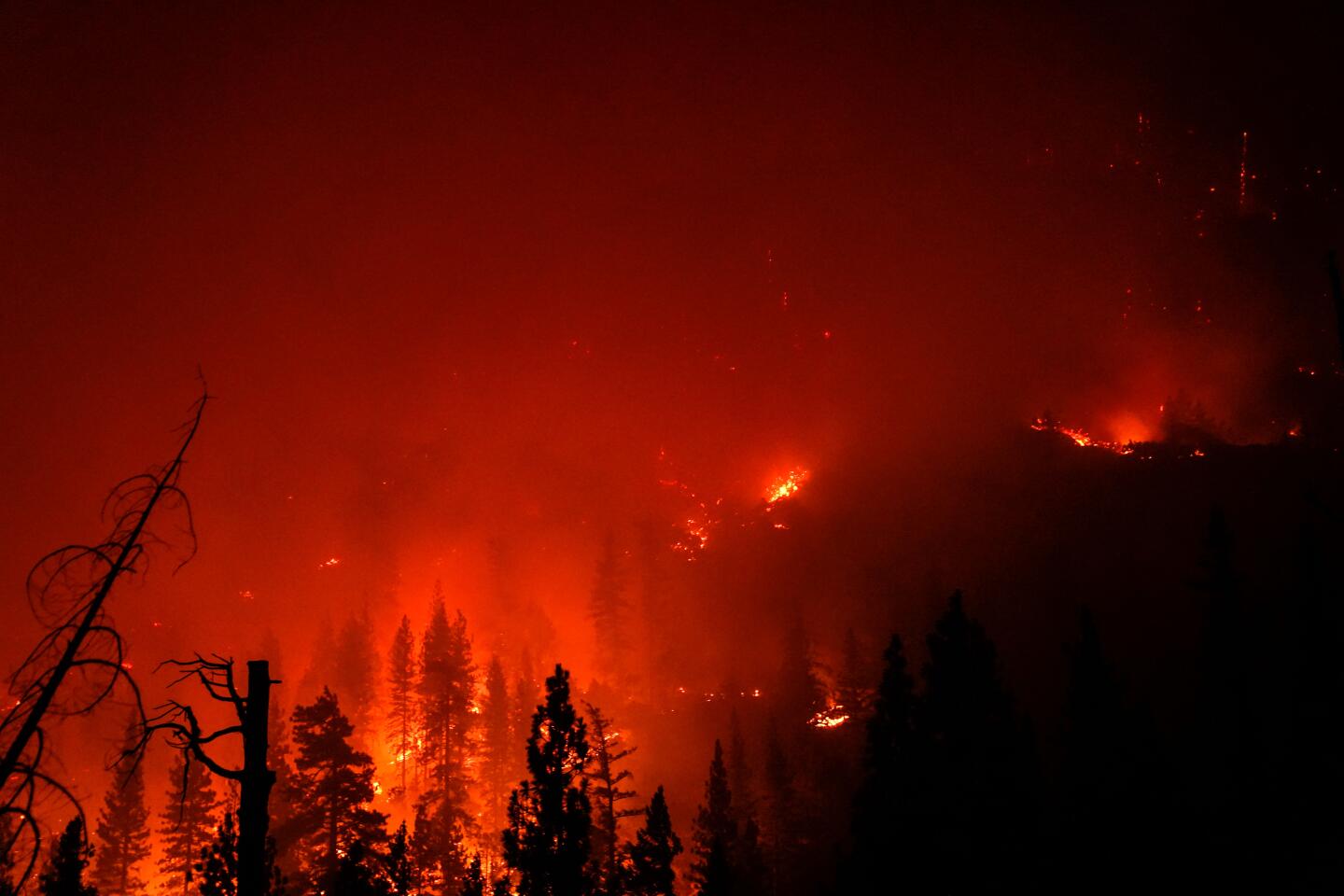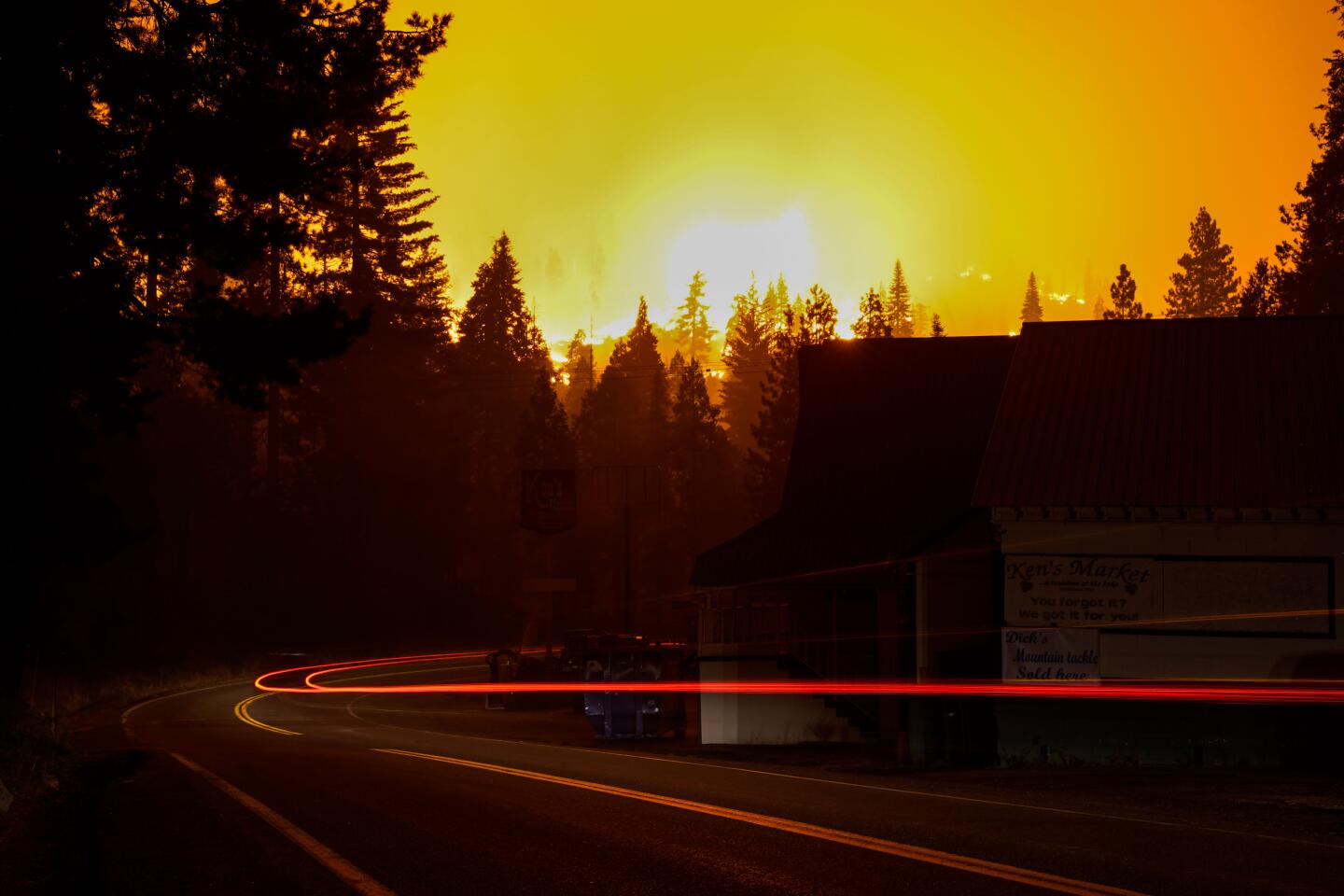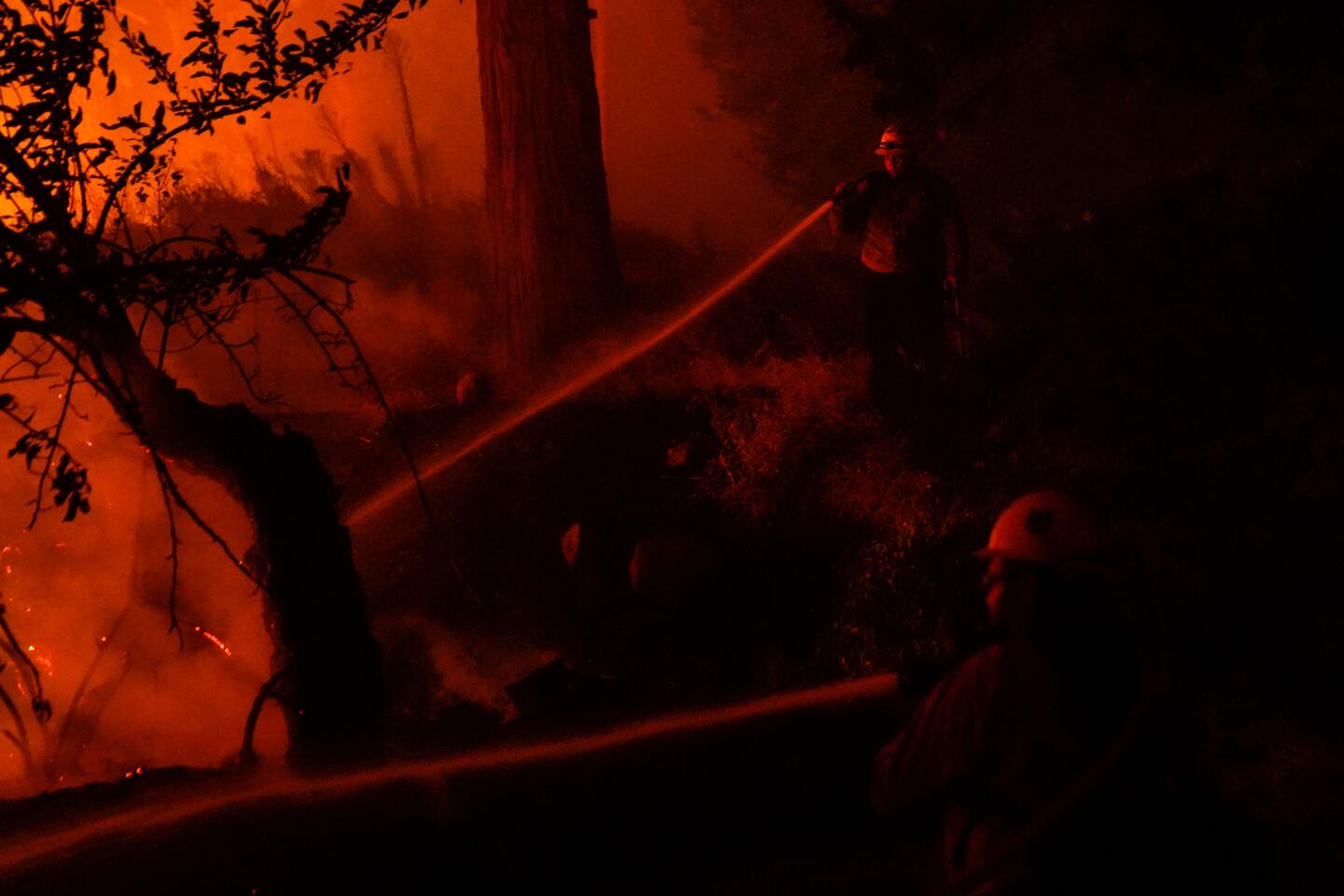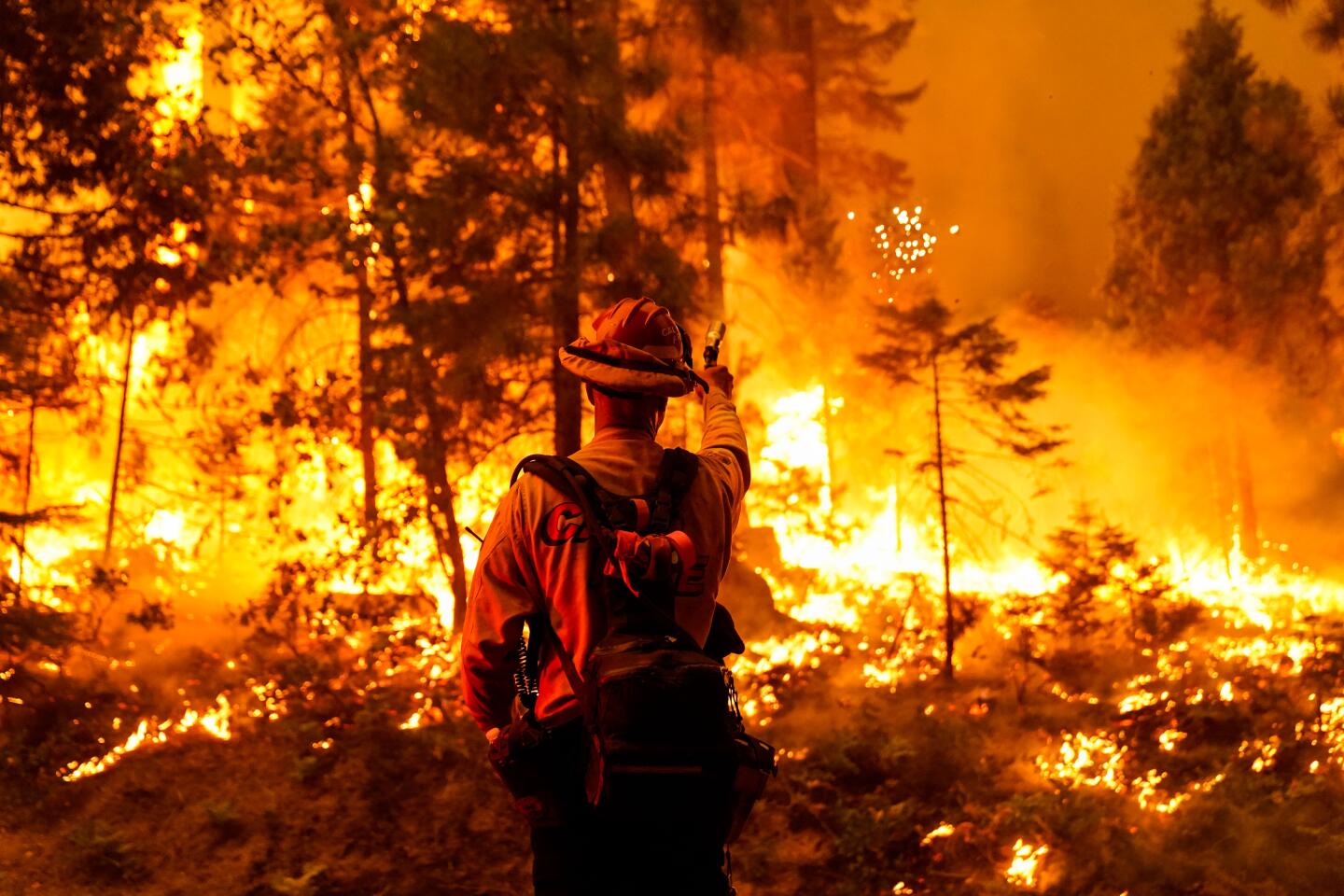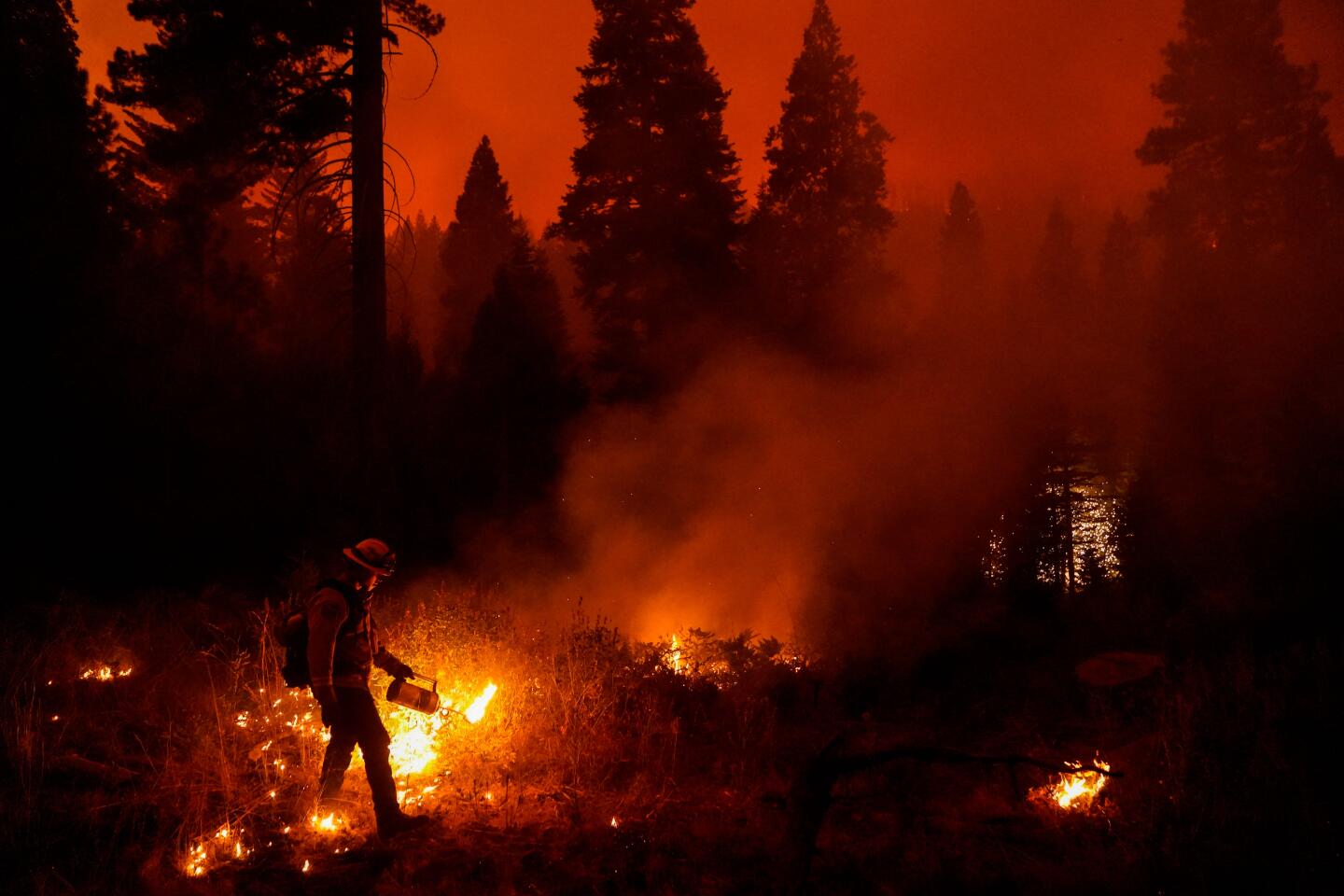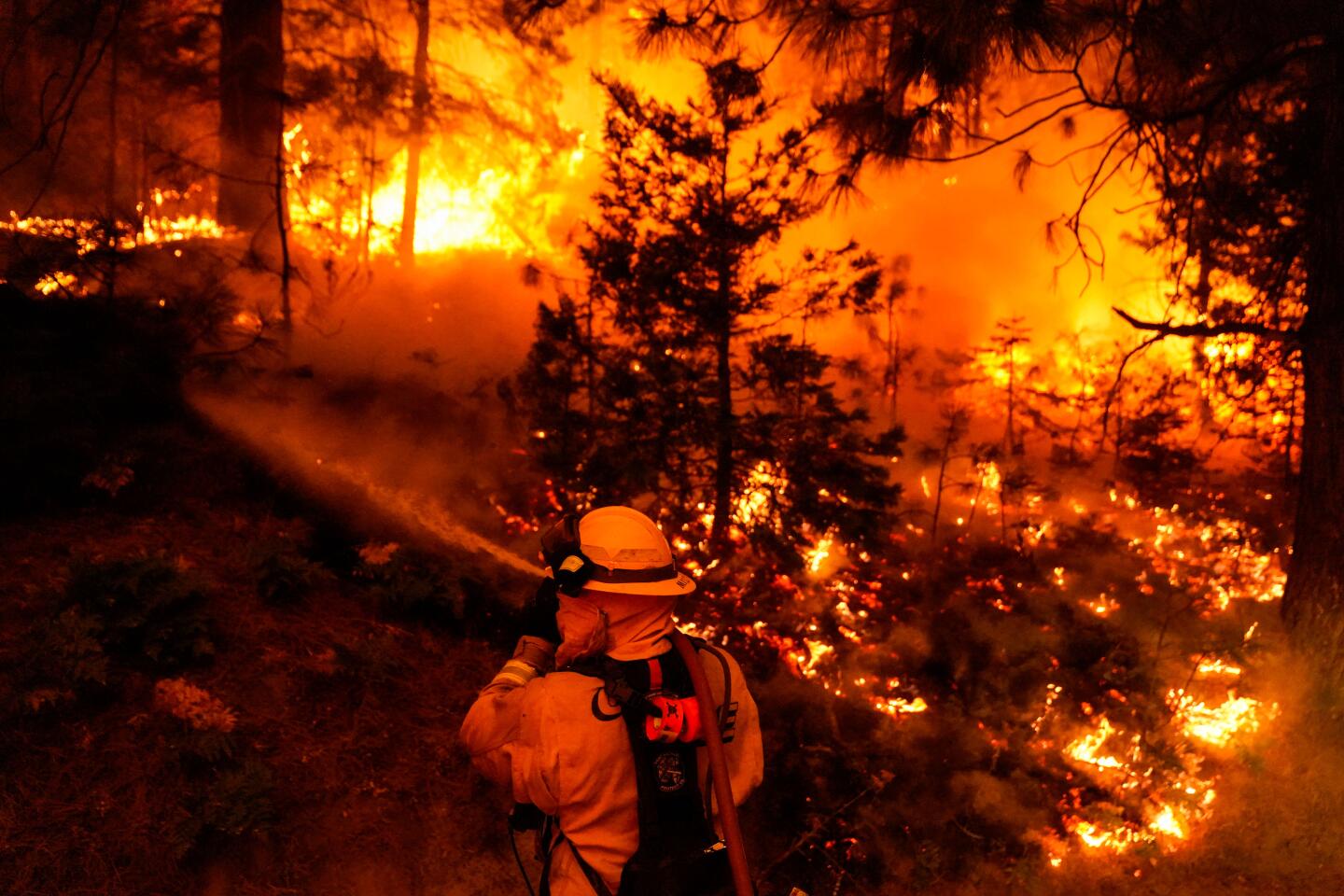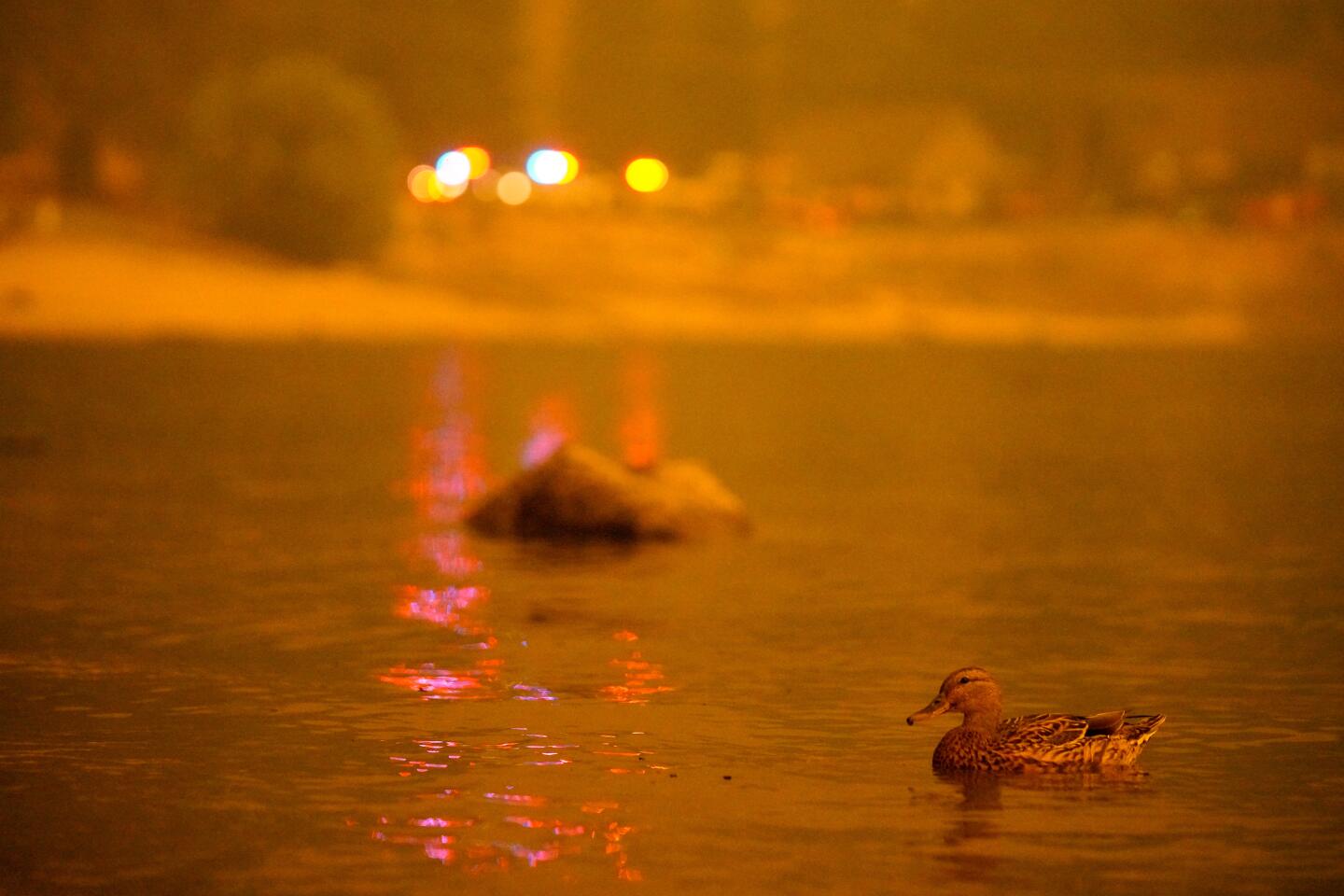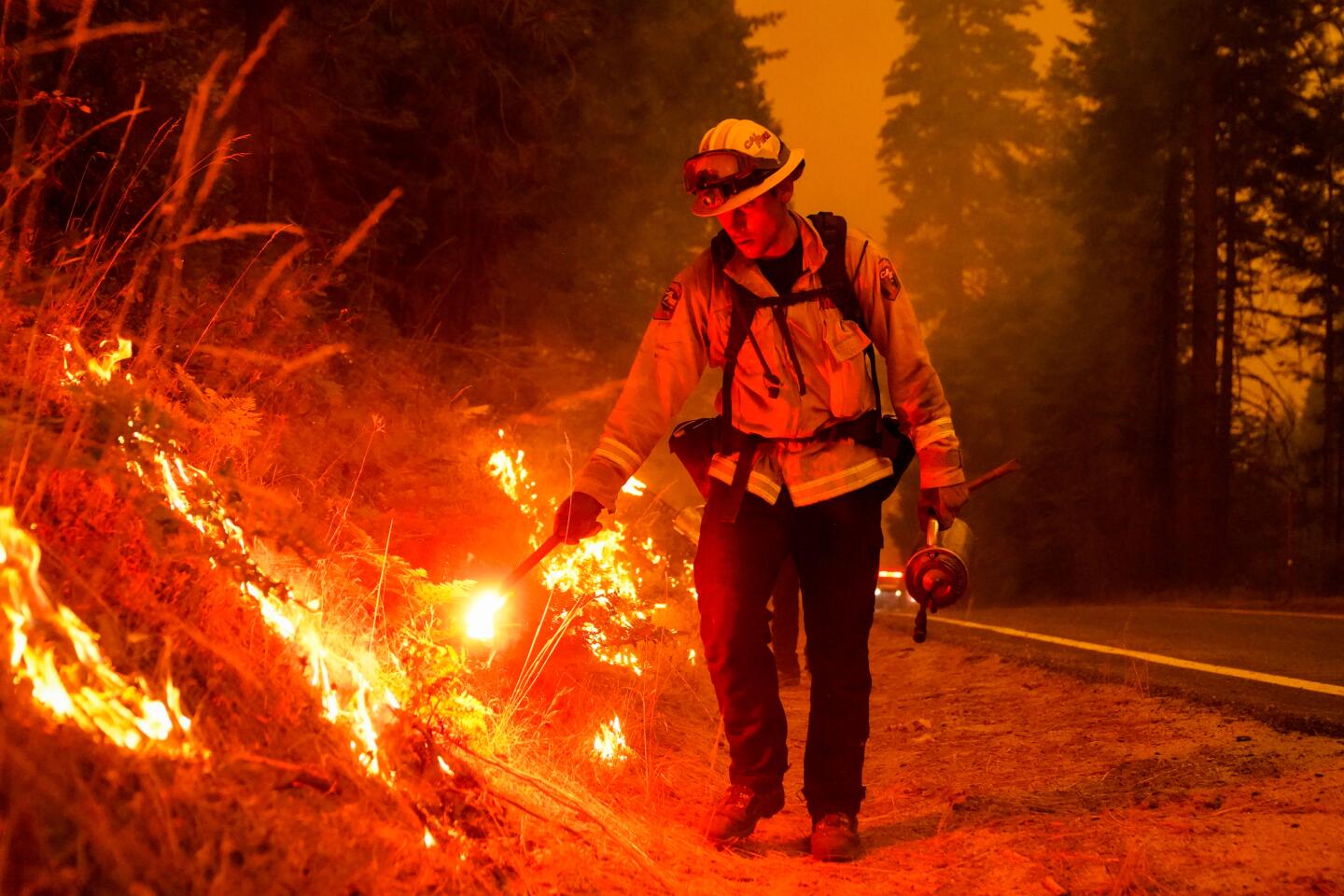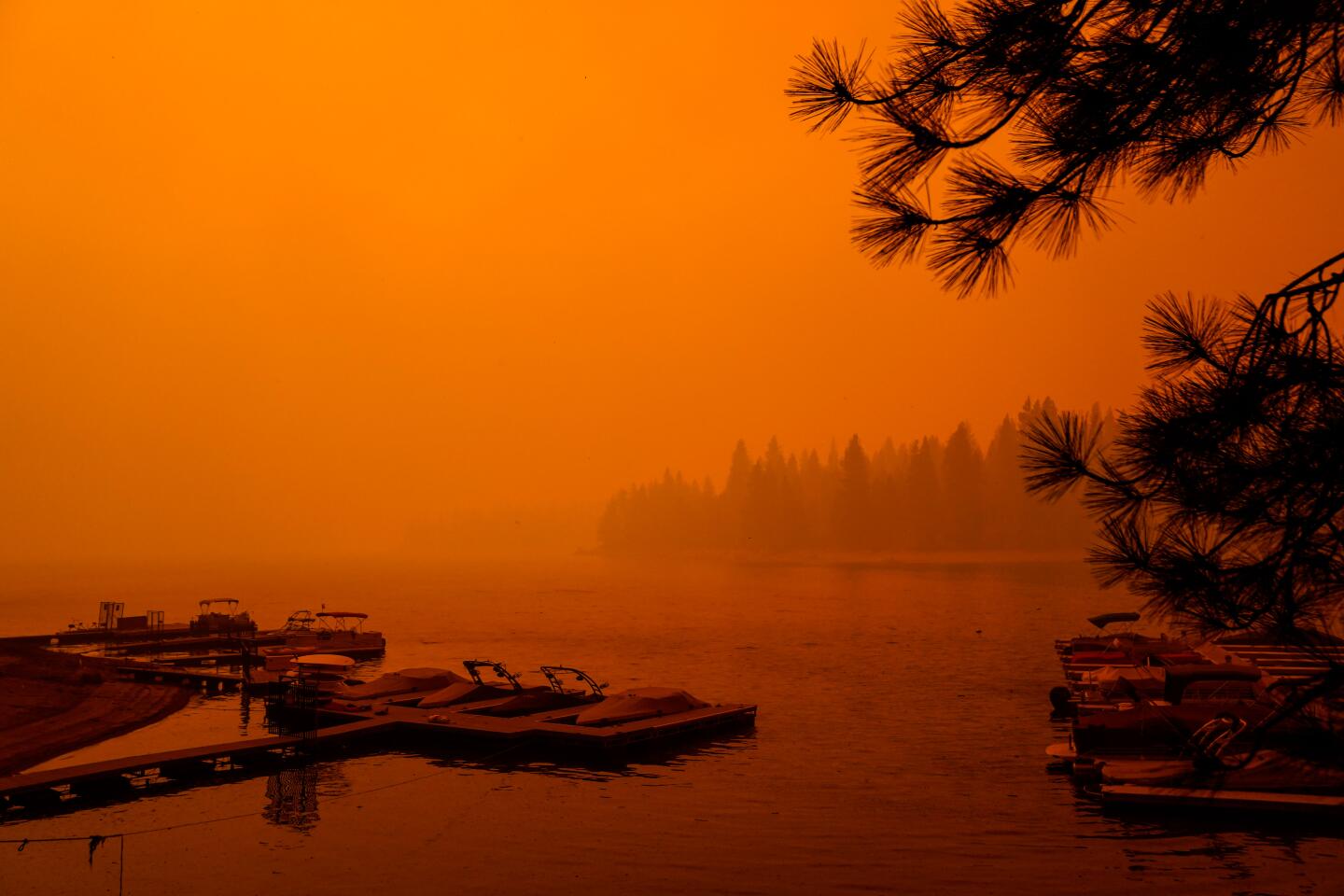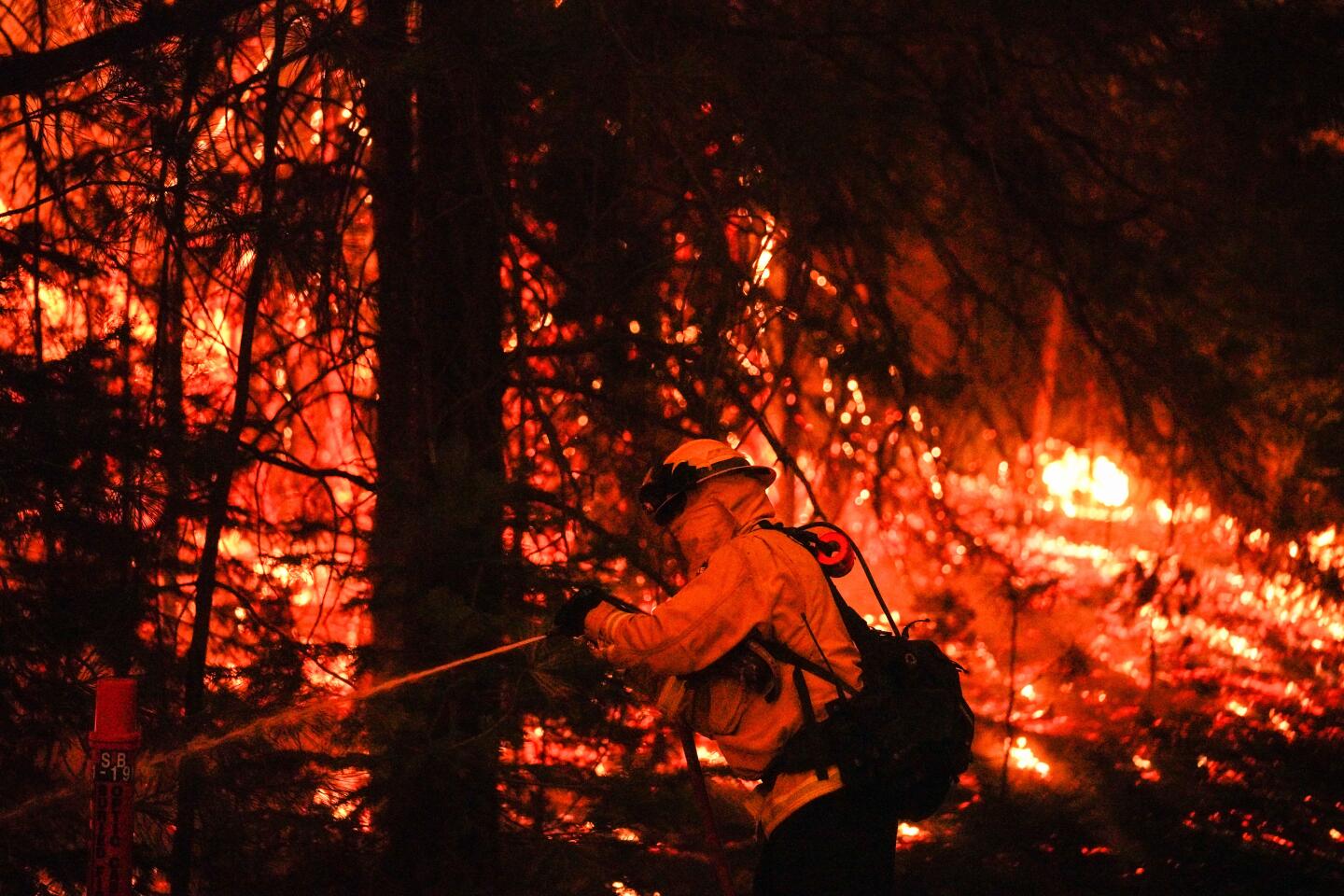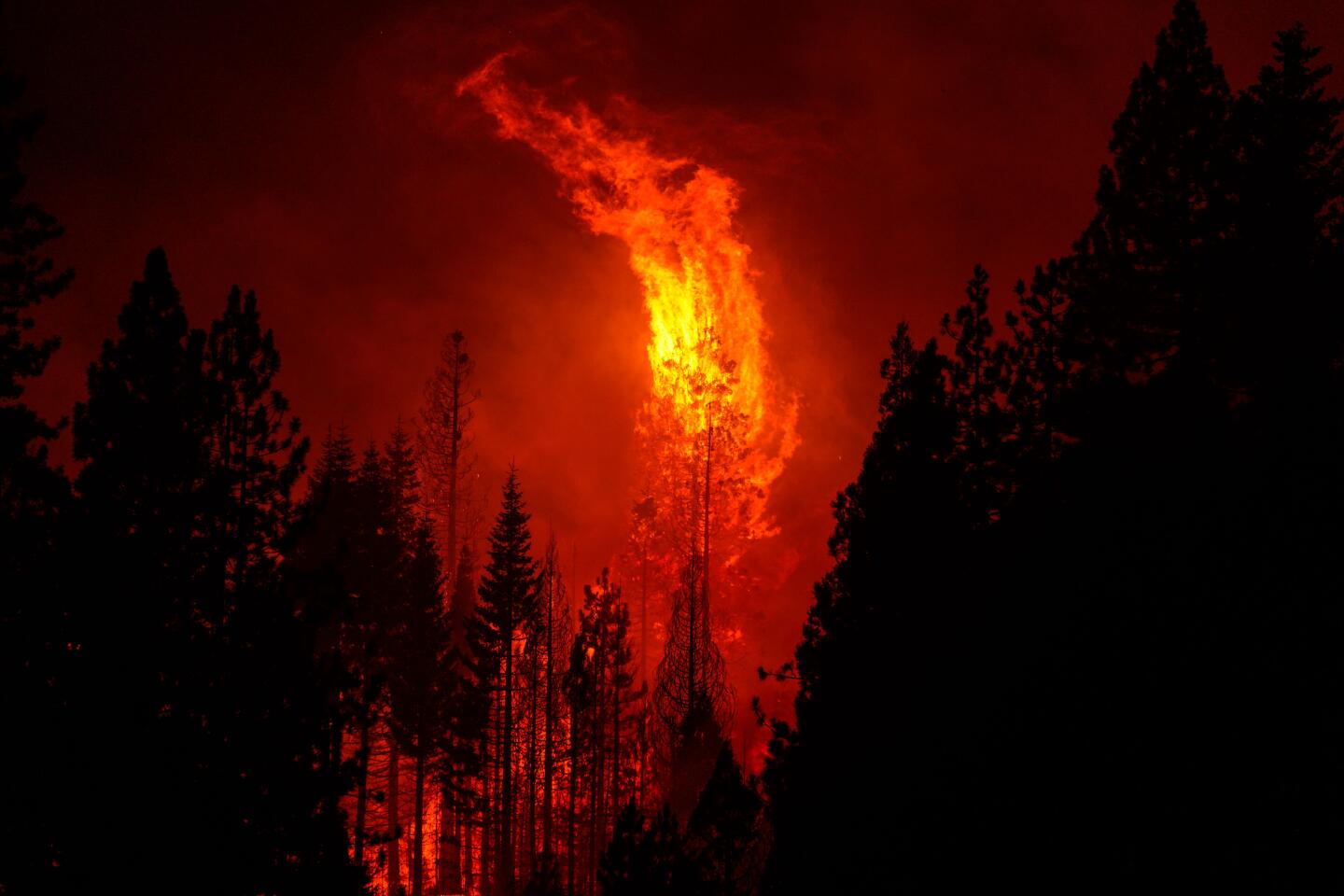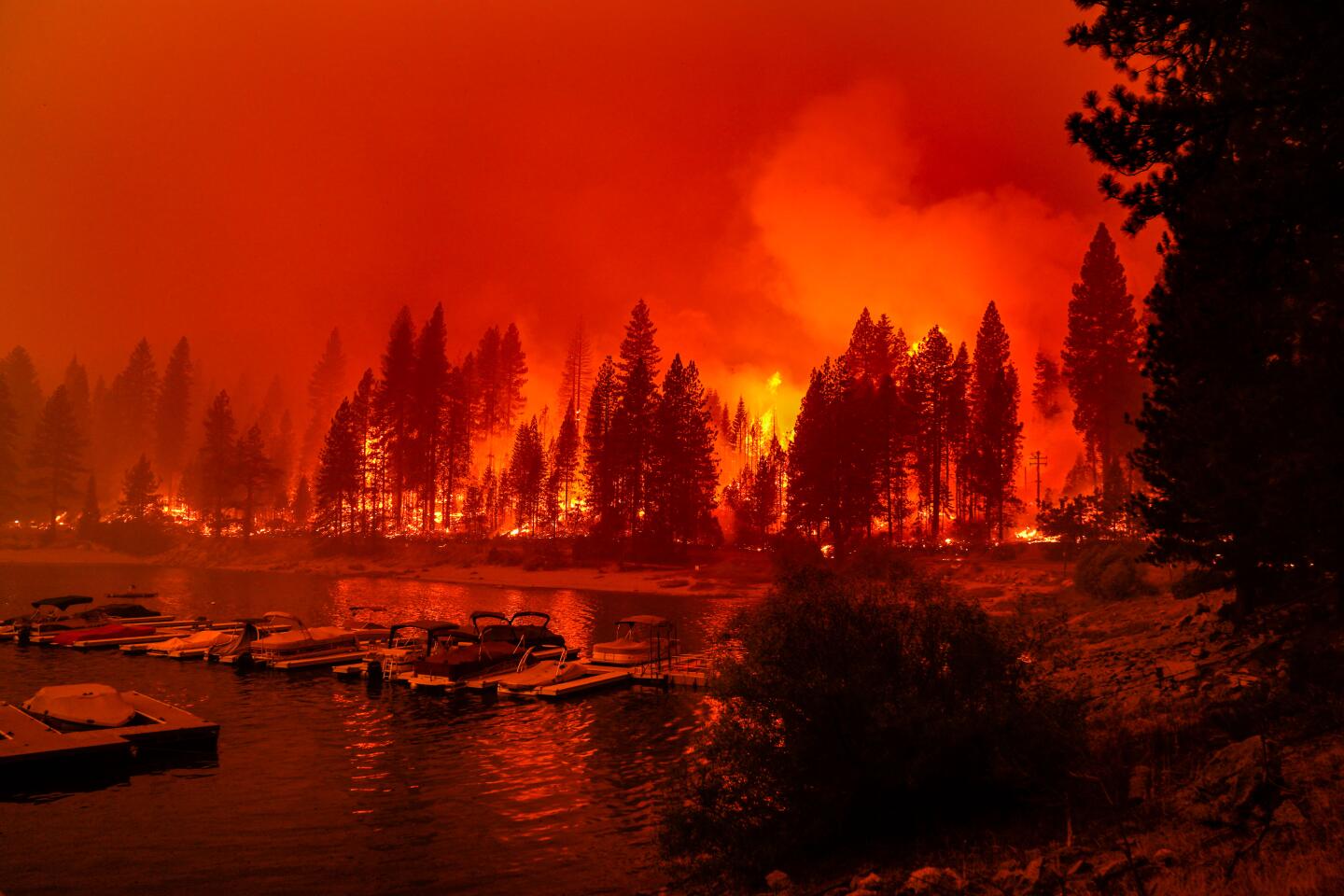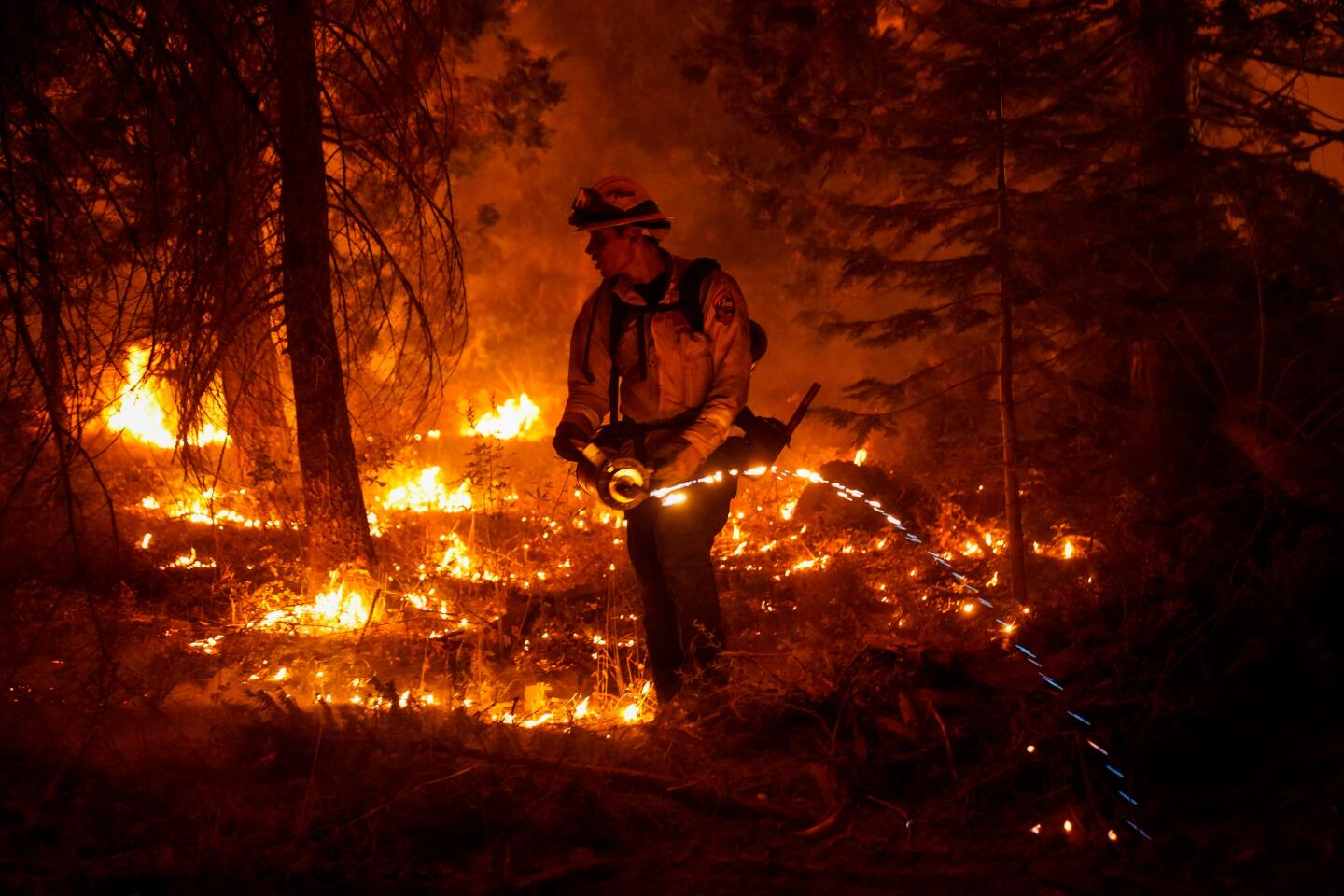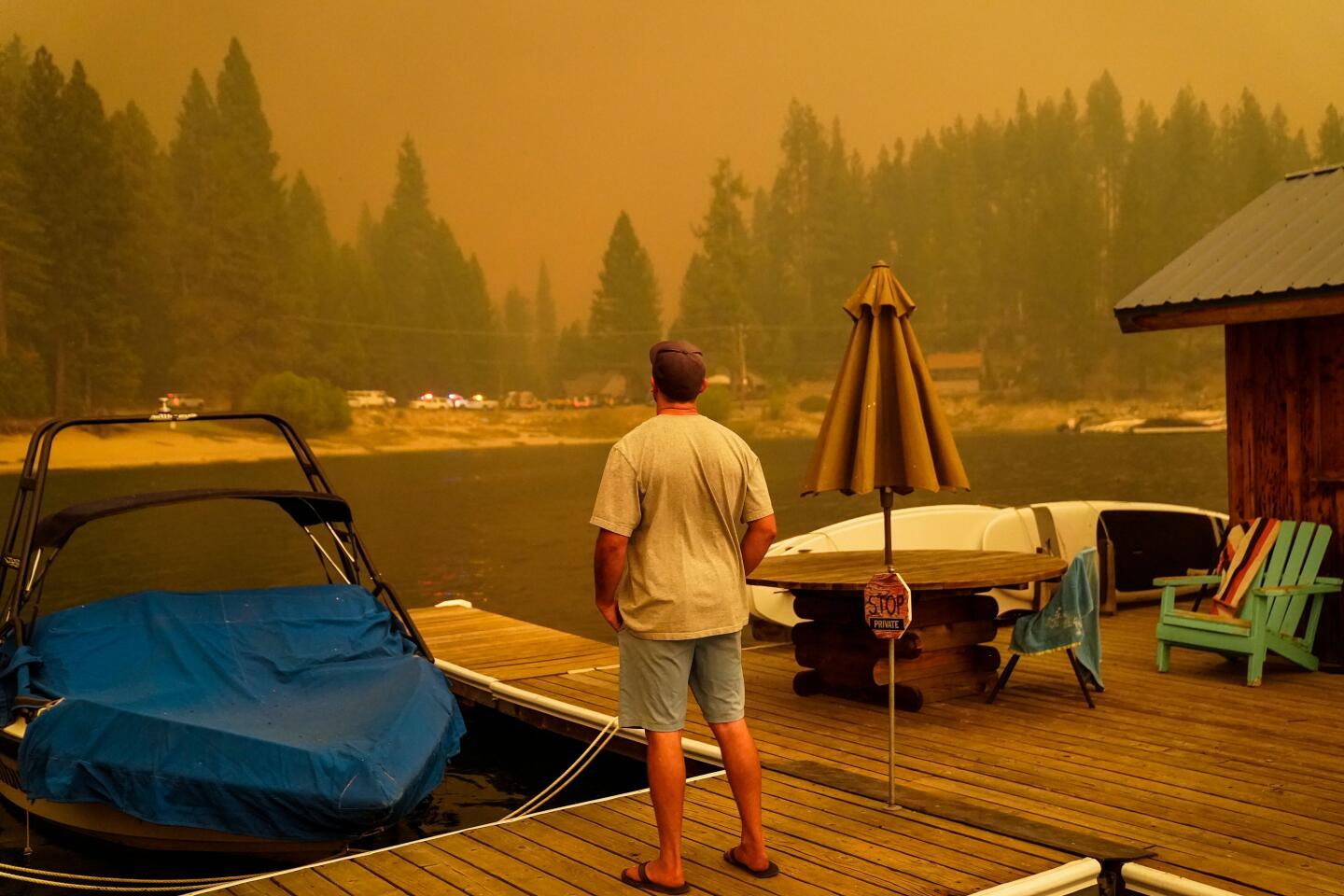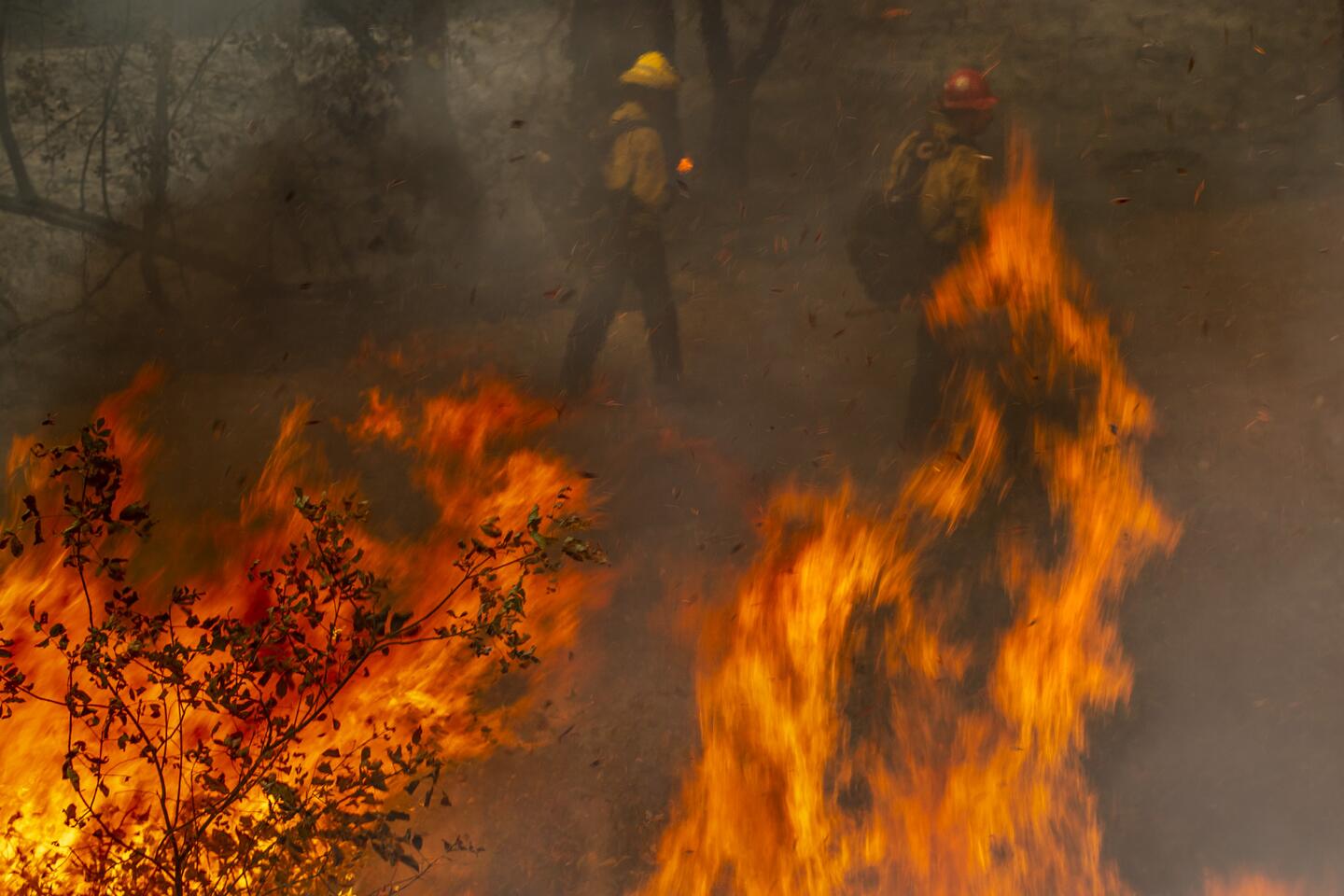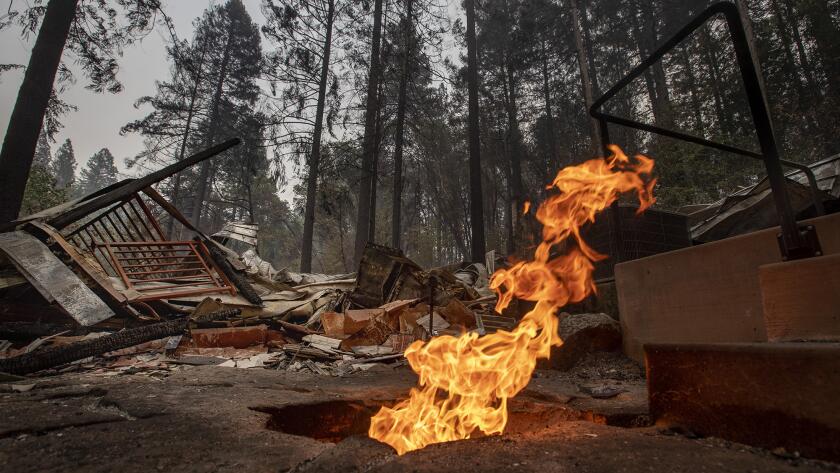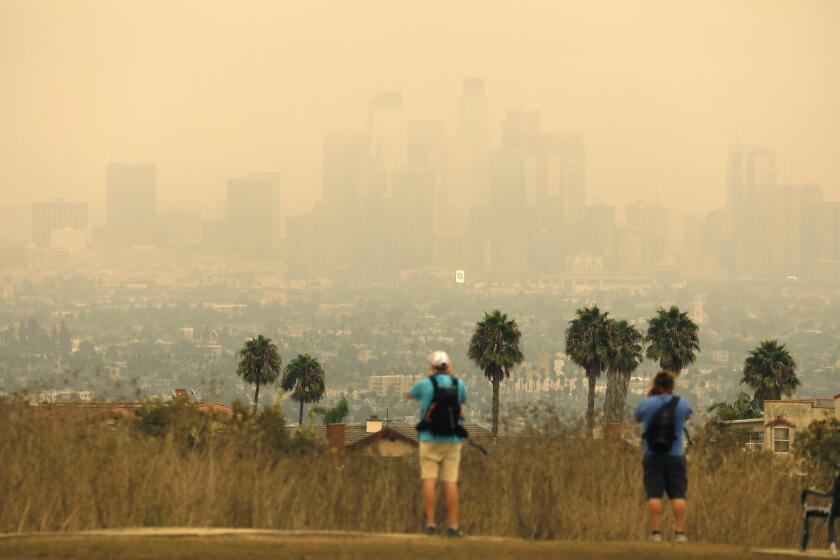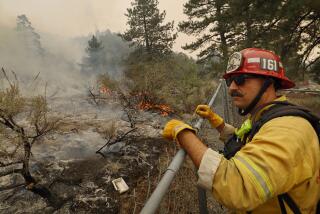Staggering California wildfire toll: Unprecedented destruction, rising deaths and lost hope
- Share via
OROVILLE, Calif. — Even before the peak of fire season, a record 3 million acres have burned across California this year, with so many blazes simultaneously whipping through dry wilderness that many have converged into massive “complexes,” the scope of which the state has never seen.
On Thursday, the August Complex — the product of 37 fires in and around Tehama County — became the largest ever recorded in California at 471,000 acres.
But its remoteness made it less a priority than several other major fires edging closer to mountain towns and foothill suburbs.
- Share via
Even before the peak of fire season, six of the 20 largest blazes in California history have occurred this year.
One of those, the North Complex blaze near Oroville, mushroomed this week into an inferno that was blamed for 10 deaths as of Thursday evening, with 16 people missing. It has scorched more than 252,000 acres and forced some 20,000 residents in Plumas, Butte and Yuba counties from their homes. The smoke layer was so thick midweek that officials were just getting a grasp of the devastation Thursday as the winds died down.
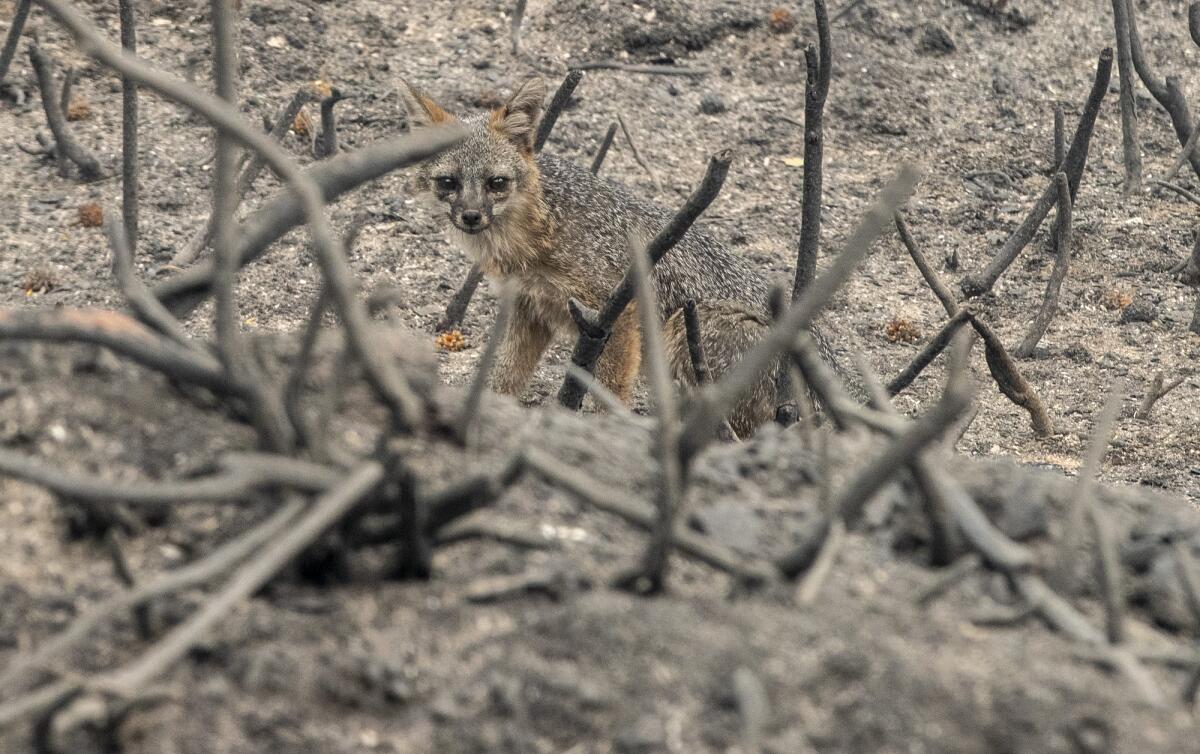
Lake Oroville still lay shrouded in a dense layer of smoke. In the city, shell-shocked evacuees drove with headlights all day, wearing masks as much for the coronavirus as to filter ash wafting like snow. They searched for scarce hotel rooms, hot meals and friendly places to park cars packed with their chosen possessions.
Up on the mountain, where the fire still burned, a small number of people remained behind the evacuation lines with power cut off and wells not working — bone-tired from this fire and the many before it.
Kendall Hill, 15, sat in a camp chair in a parking lot with his dad, helping friends give out free hot dogs and chips to exhausted first-responders. Hill fled his home in Berry Creek on Tuesday night, leaving before flames arrived. Fortunately, his home survived, but some of his family in the area lost theirs.
“It’s sad,” he said, exhaustion in his eyes. “Emotional.”
Little was left but chimneys, washing machines and the smoking remains of cars and trucks in tiny Berry Creek.
Like the winds that race down the mountainsides near Los Angeles each fall, gaining heat and fanning the flames as they go, the gales that struck Oregon over the weekend have turned small fires into infernos.
In a community many described as “family,” Butte County Animal Control officer Lynette Brennan waited by the side of the road for firefighters to deliver two injured dogs they recovered.
Inside a trailer, she had two horses, one burned, waiting to be taken down the hill. She has worked this job for eight years and been through multiple fires.
“It’s daunting,” she said. “You see everything destroyed.”
Brennan said one of the hardest parts is personally knowing so many people who lost homes, and that many will not be able to rebuild. “You know they lost everything, and there is no recouping that,” she said.
The many fires of the North Complex had calmed down enough Thursday for some to start taking stock of their losses.
But in the last month, when one blaze slowed, another inevitably exploded.
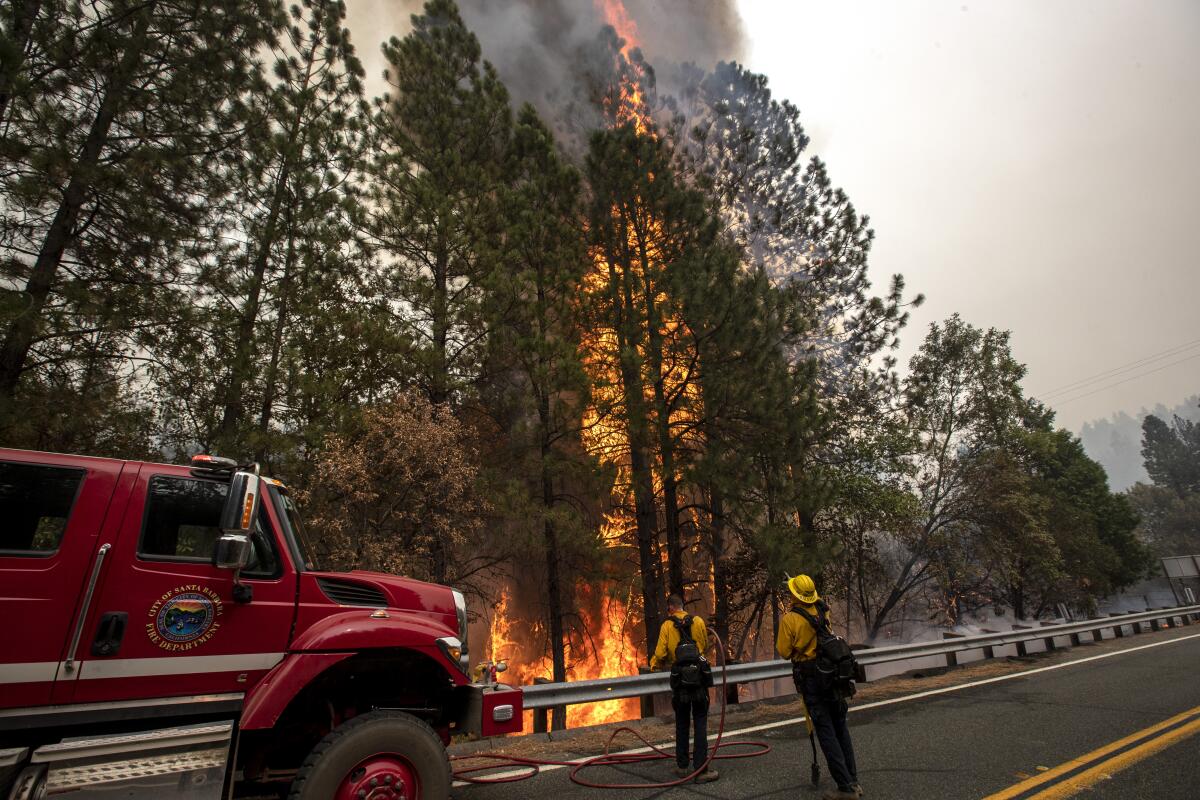
In the far north, the Slater fire took off Wednesday night, growing from 30,000 acres to more than 120,000 by 7 a.m. Thursday. It crossed the border into Oregon, a state already besieged by its own fires, with half a million people under evacuation orders. Two bodies have been recovered in the footprint of the blaze.
With that fire’s expansion, Gov. Gavin Newsom added Siskiyou County to its list of 17 other counties in a state of emergency.
Cal Fire spokesman Daniel Berlant said dangerously dry conditions led “to explosive fires that have really just skyrocketed us past the 3-million mark for the first time in our recorded history.”
“Unfortunately, with several more months of fire season to go, this number could continue to increase,” he said Thursday.
The sheer number of wildfires across California and the parched West has left fire crews stretched like never before.
The U.S. Forest Service reported that just 1,117 personnel were on the August Complex.
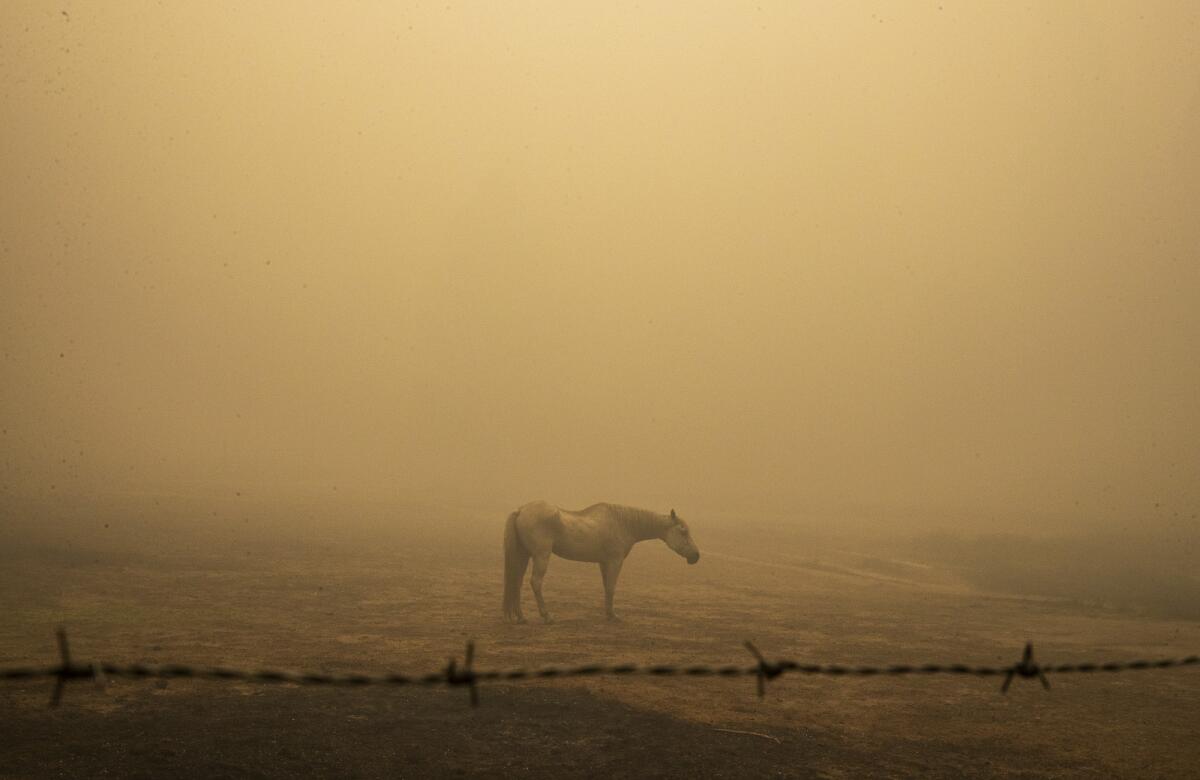
By comparison, nearly 4,000 personnel battled the 2018 Mendocino Complex that had been the state’s largest until it was surpassed by the August Complex. The 2017 Thomas Fire had nearly 9,000 people on the scene at one point.
The complex fires burning now date back to a freak mid-August siege of dry lightning across Northern California, sparking four of the 10 largest fires on record in California.
Both the August and North Complex fires were ignited in that storm, continued burning in the back country, then exploded with this week’s heatwave and high winds.
Two others — the SCU Lightning Complex in the hills east of San Jose and the LNU Lightning Complex in the North Bay and wine country — are still burning but almost entirely contained. They account for the third and fourth largest since California began keeping records in 1932.
The Dolan fire, which ignited Aug. 18 north of Limekiln State Park in Monterey County, has also seen extreme growth this week, tripling in size to 110,000 acres.
A second salvo of new fire ignitions worsened the dire situation, with the Bobcat fire in the San Gabriel Mountains, the Valley Fire southeast San Diego County, the El Dorado fire near Yucaipa, the Creek fire roaring out of the Sierra National Forest.
At the Creek fire, lighter winds cleared the air long enough beginning Wednesday afternoon to finally give aircraft an opportunity to line the forest with retardant, as crews on the fire’s southern portion worked to harden the defenses around areas such as Meadow Lakes and Tollhouse.
“We’re really trying to start gaining containment on this fire,” said Chris Vestal, a spokesman for the Creek fire response. “A lot of what we want to do is make sure everything that is standing stays standing.”
Above Monrovia, the Bobcat fire was updated to a “Type 1” incident Thursday by forest service officials, reflecting a need for more personnel and equipment.

“Potential size and potential complexity” were both factors in the reclassification, according to Forest Service representative Micah Bell.
“I’ve actually seen Type 1 teams handle fires that were barely 2,000 acres, but it was the complexity of managing it that requires a bigger team,” Bell said.
“Crazy, unbreathable” air forces Southern Californians indoors, clogging daily routines
Though the fire has swelled significantly — nearly doubling in size Wednesday — much of the growth was in its northeastern portion, Bell said, away from threatened foothill communities.
Six areas remain under an evacuation warning: Duarte, Bradbury, Monrovia, Sierra Madre, Pasadena and Altadena.
The hope is that weather conditions will “improve across the state today, with most areas experiencing seasonal temperatures and dry conditions,” according to Cal Fire.
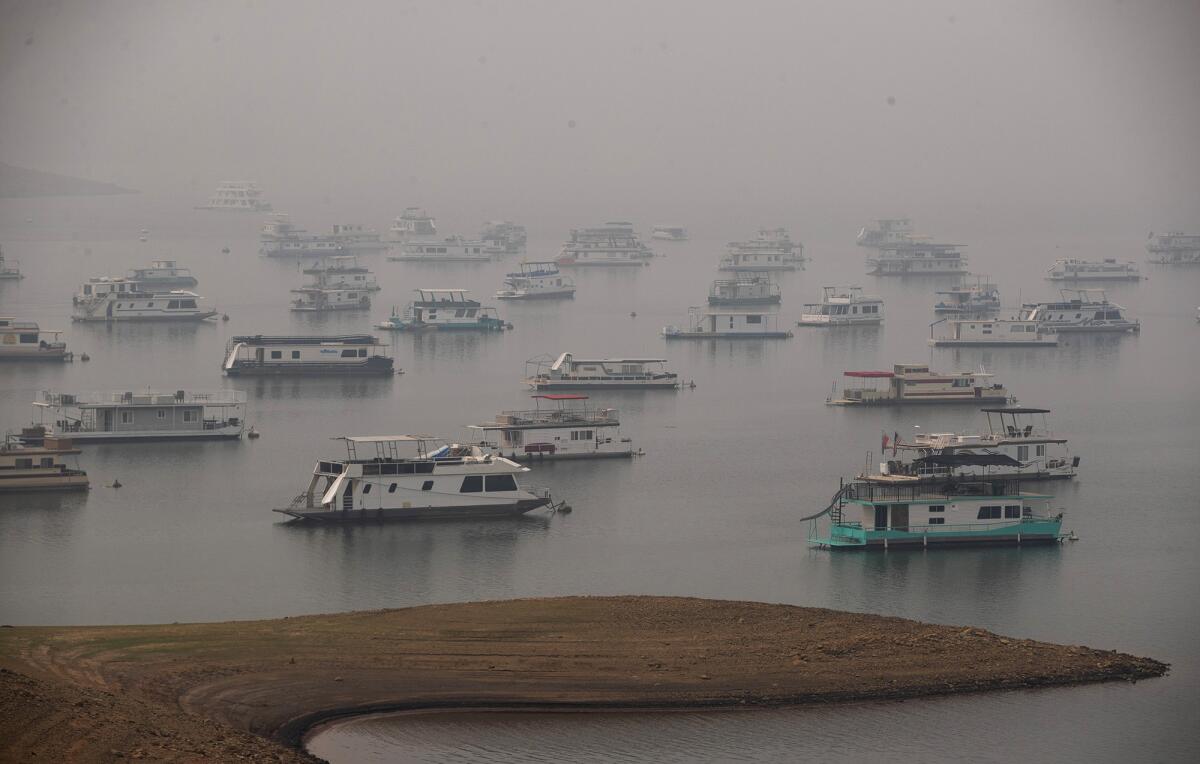
“Northern California should expect average temperatures through the weekend, with a possible cooling trend next week,” officials wrote Thursday. “In Southern California, temperatures will be at or slightly above normal.”
Chabria reported from Oroville, St. John from Chico, Money and Mozingo from Los Angeles. Times staff writers Joseph Serna, Hayley Smith, Tony Barboza and Alejandra Reyes-Velarde contributed to this report.
More to Read
Sign up for Essential California
The most important California stories and recommendations in your inbox every morning.
You may occasionally receive promotional content from the Los Angeles Times.
